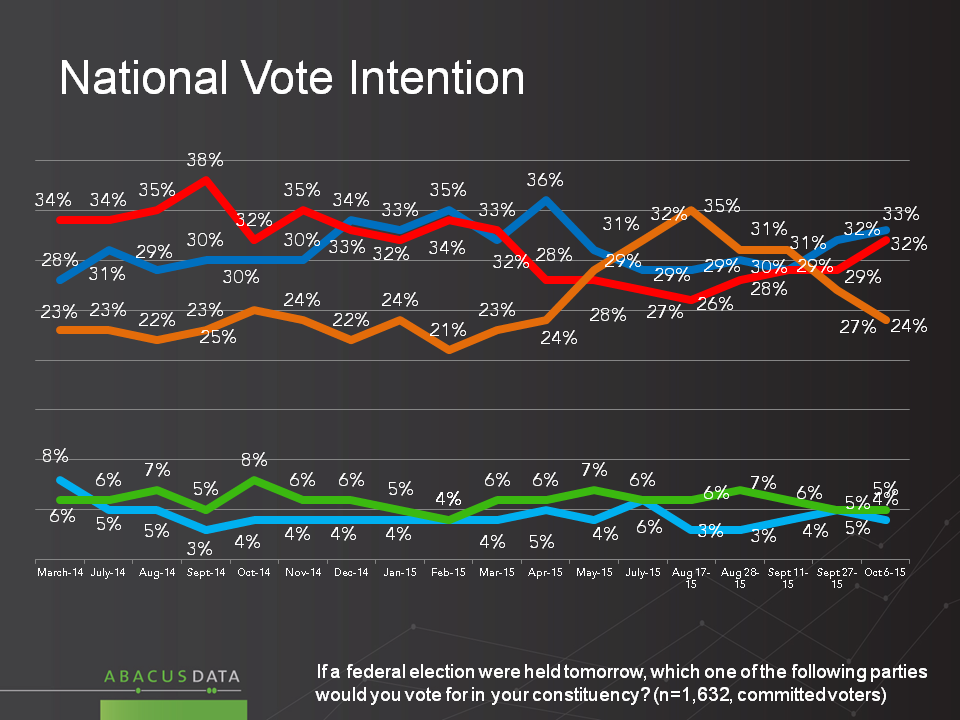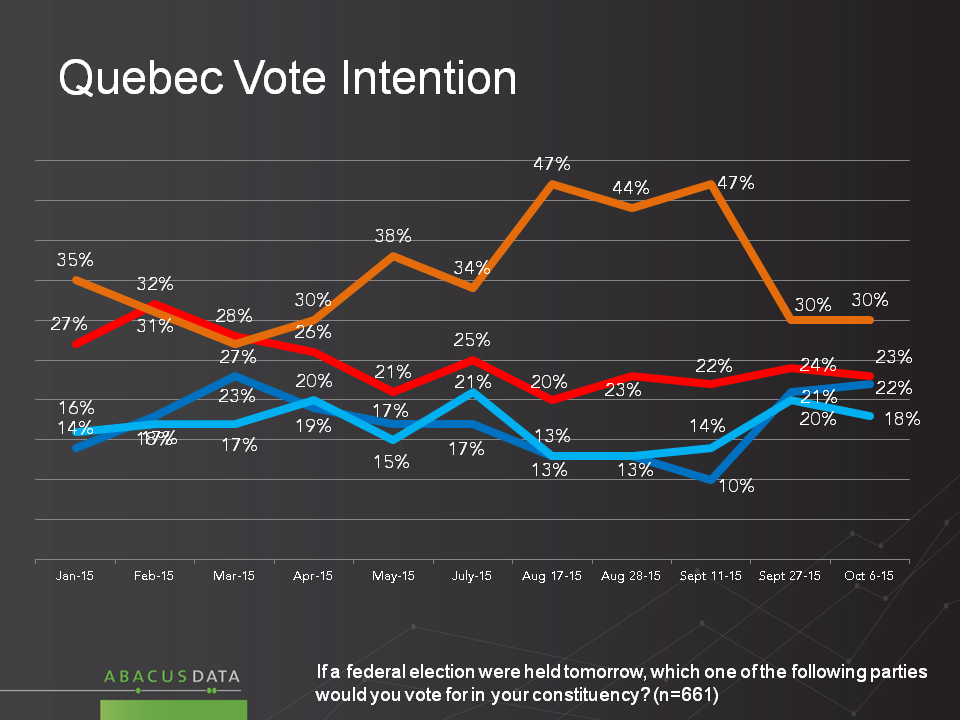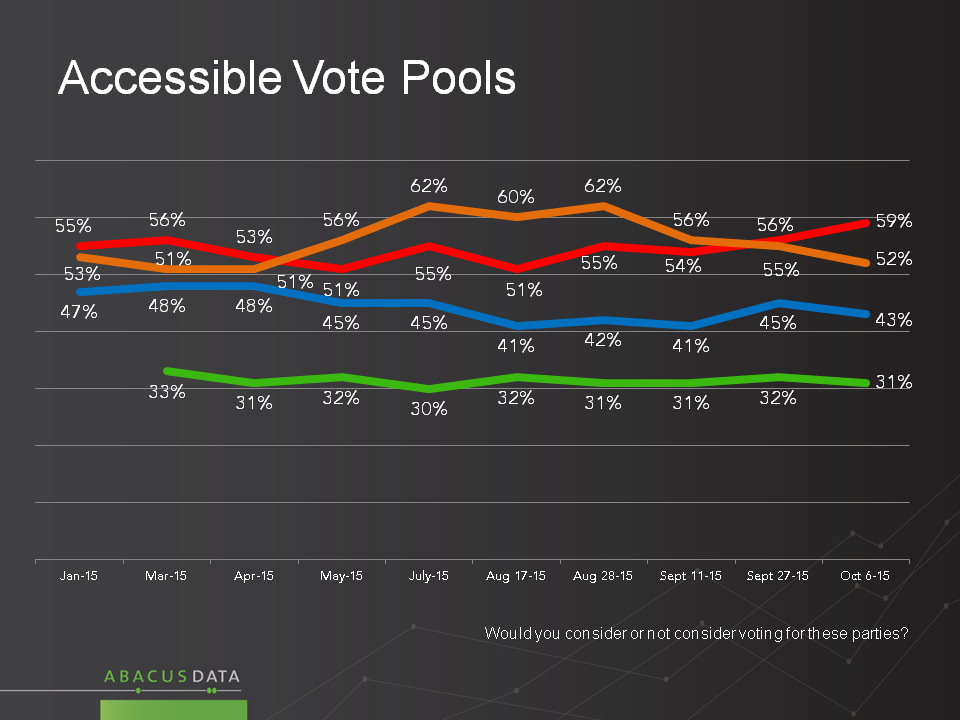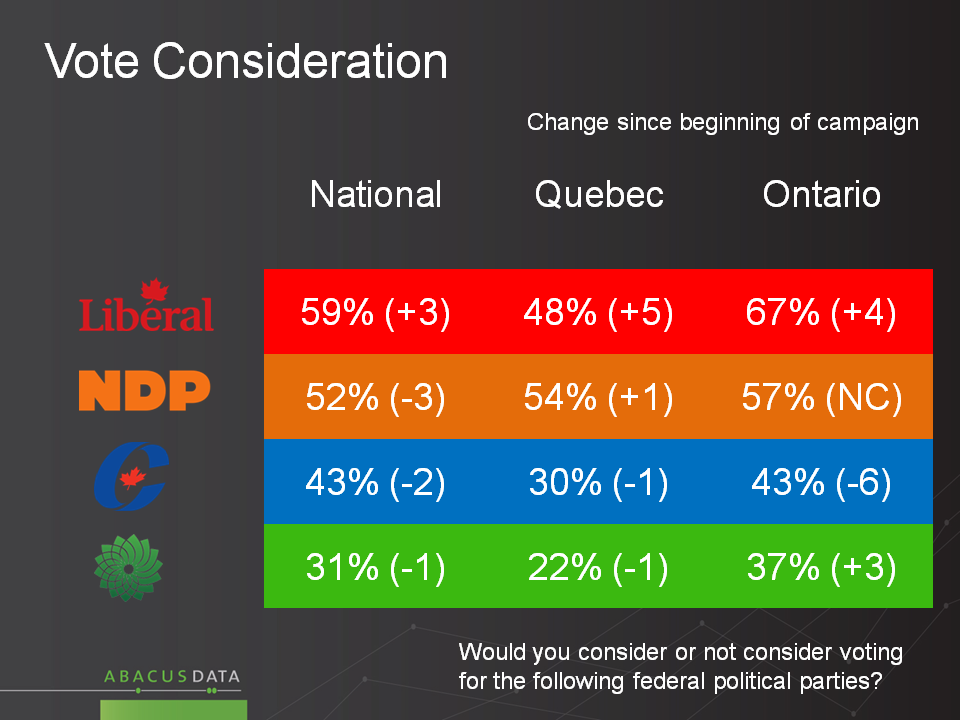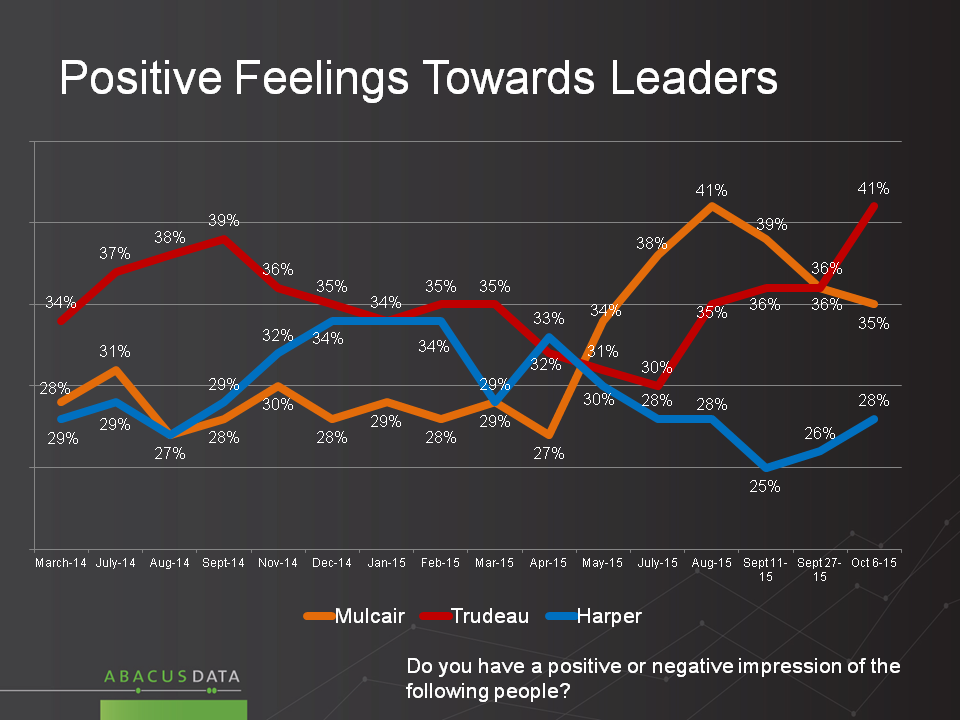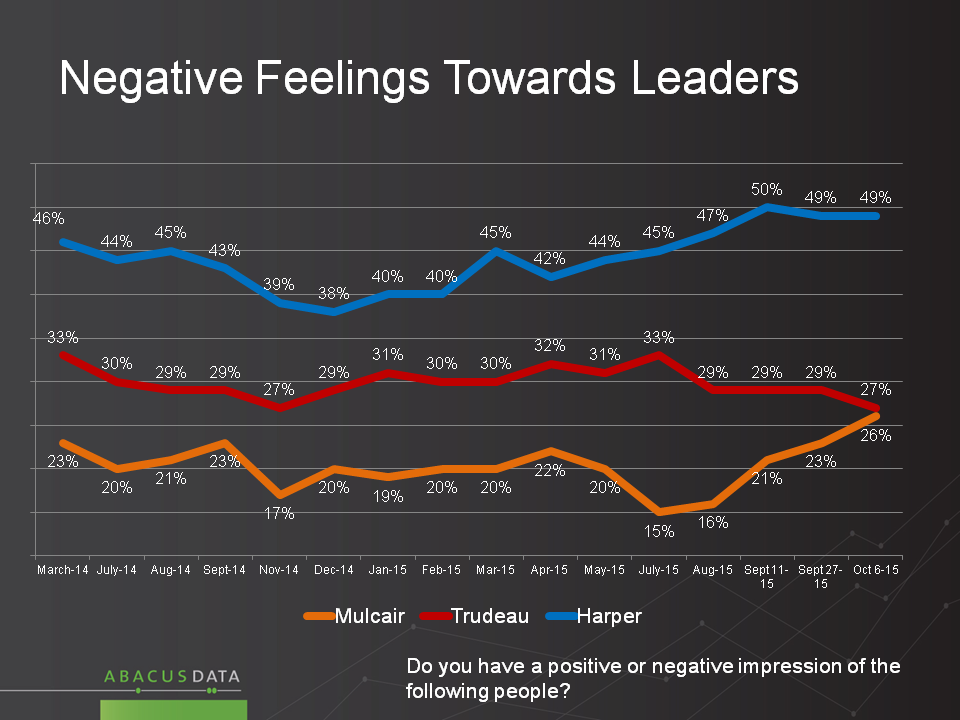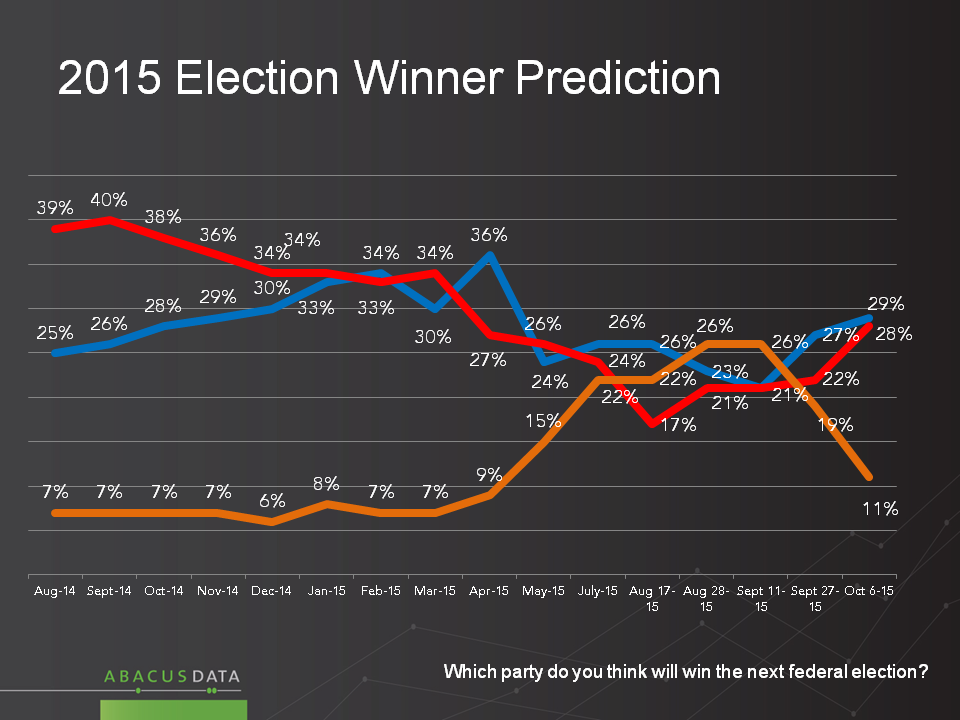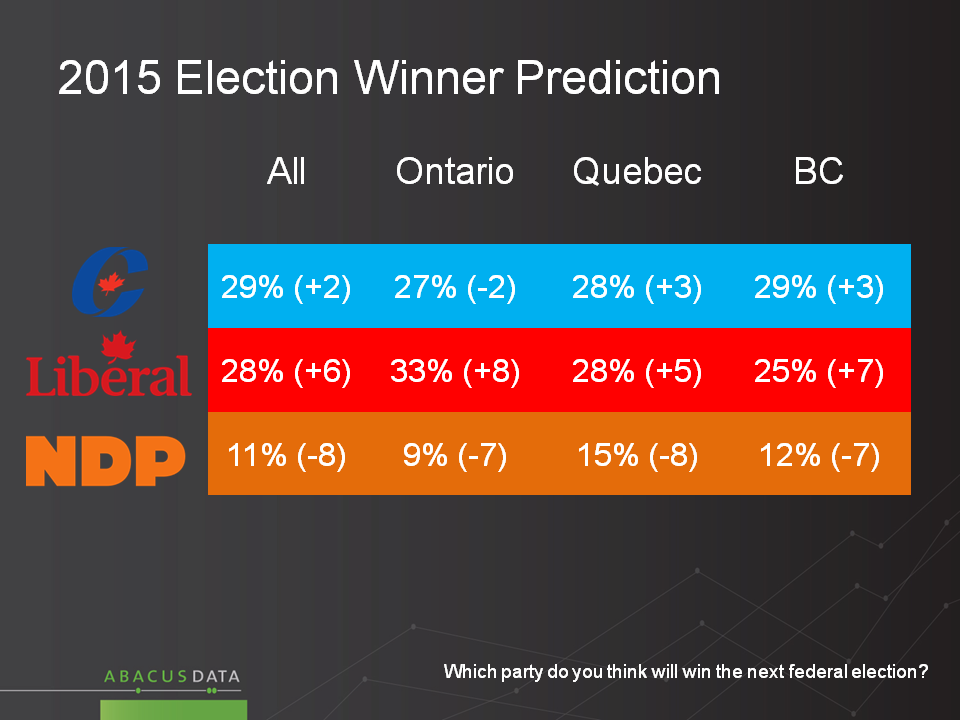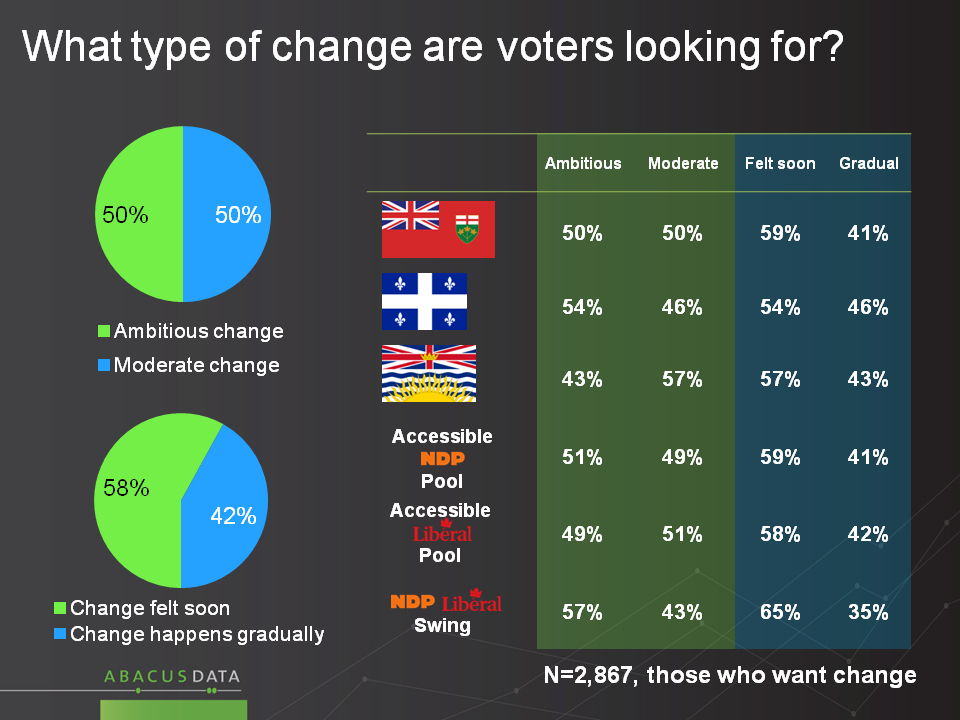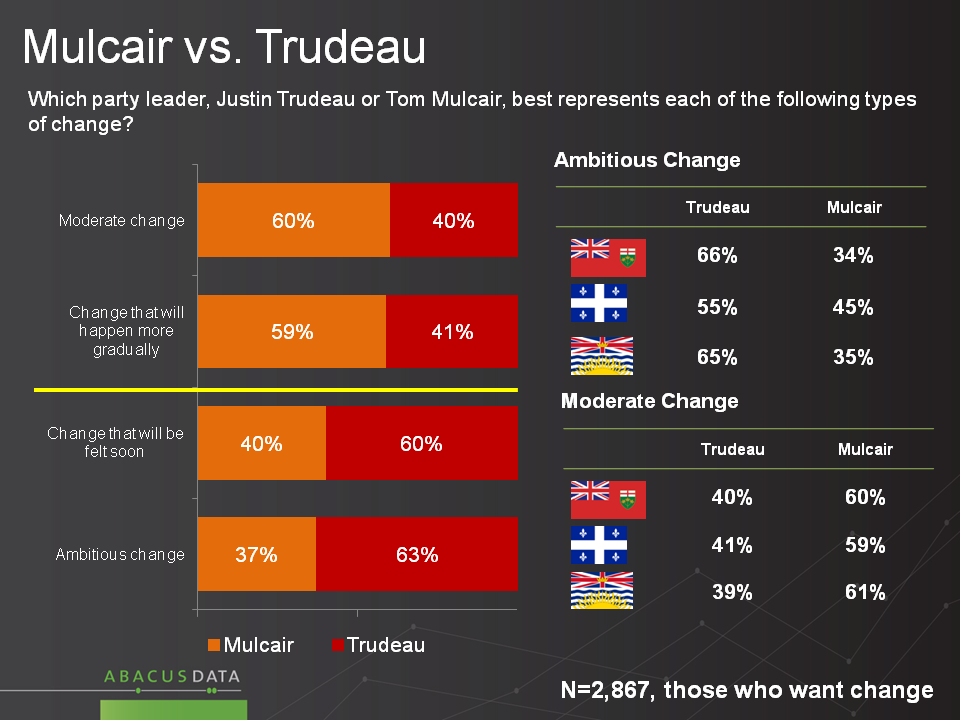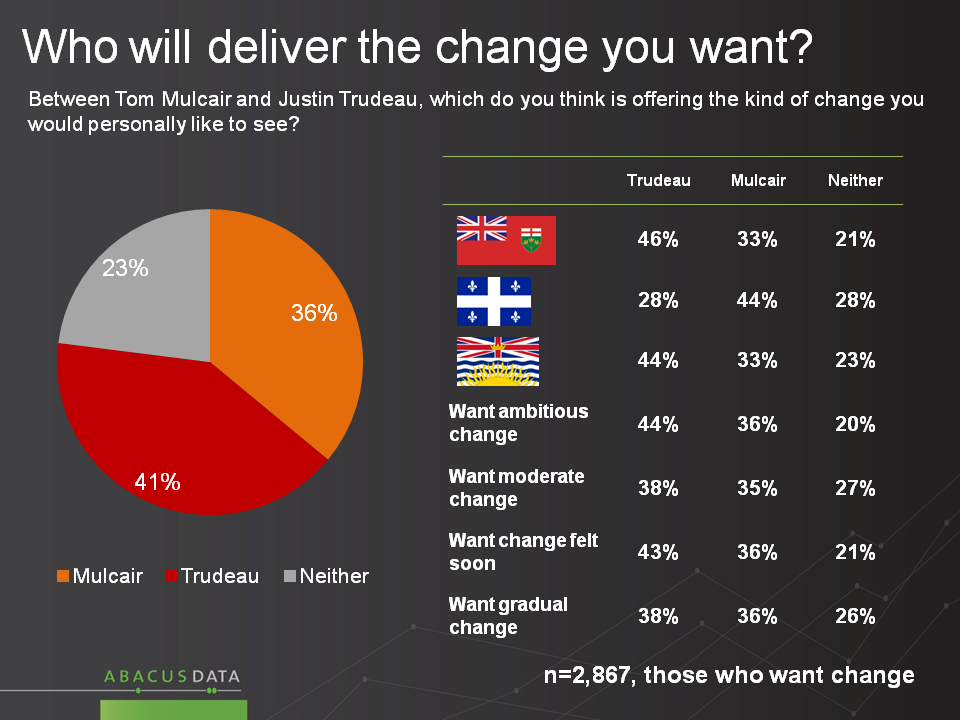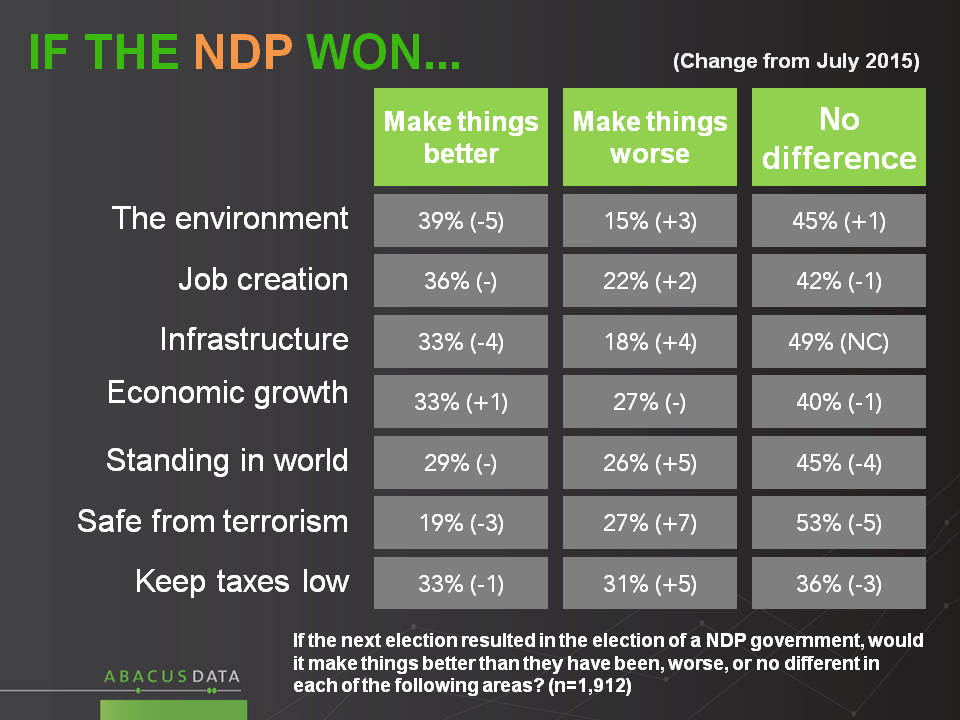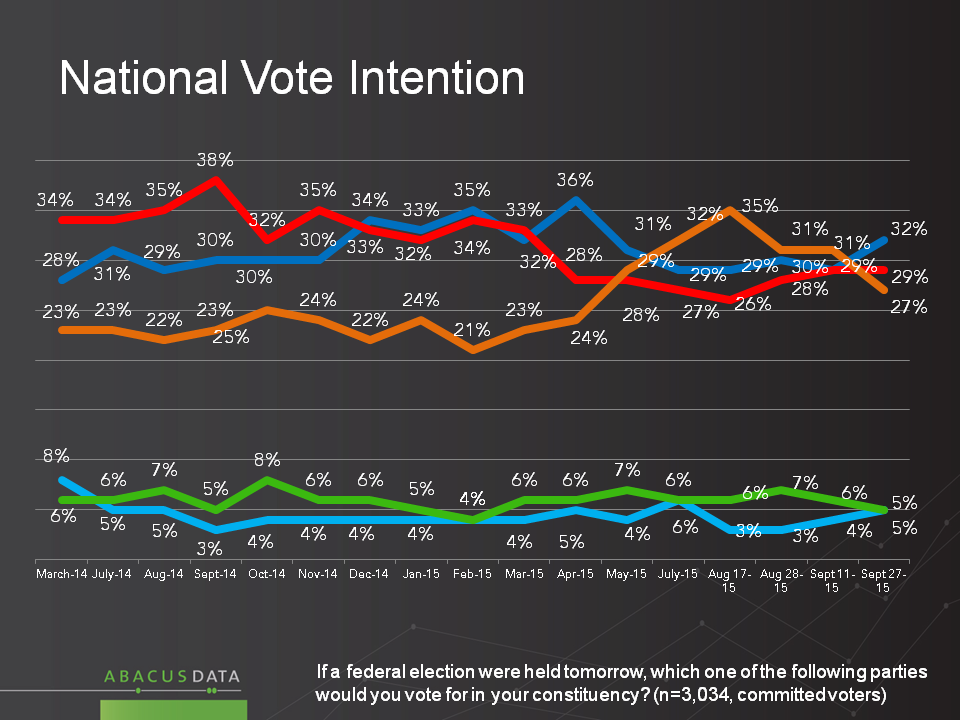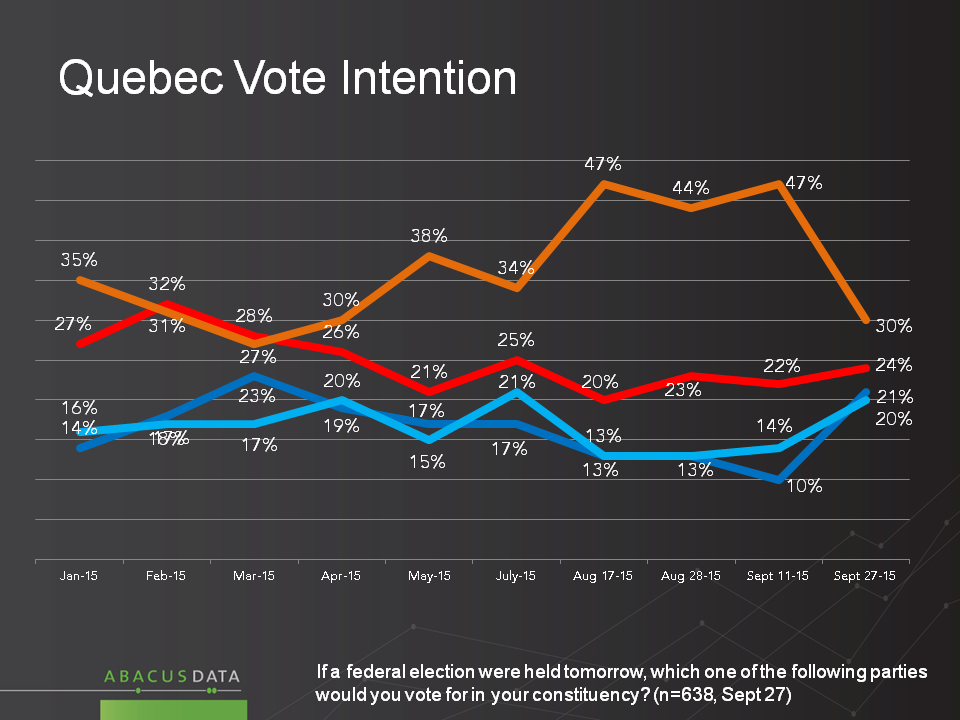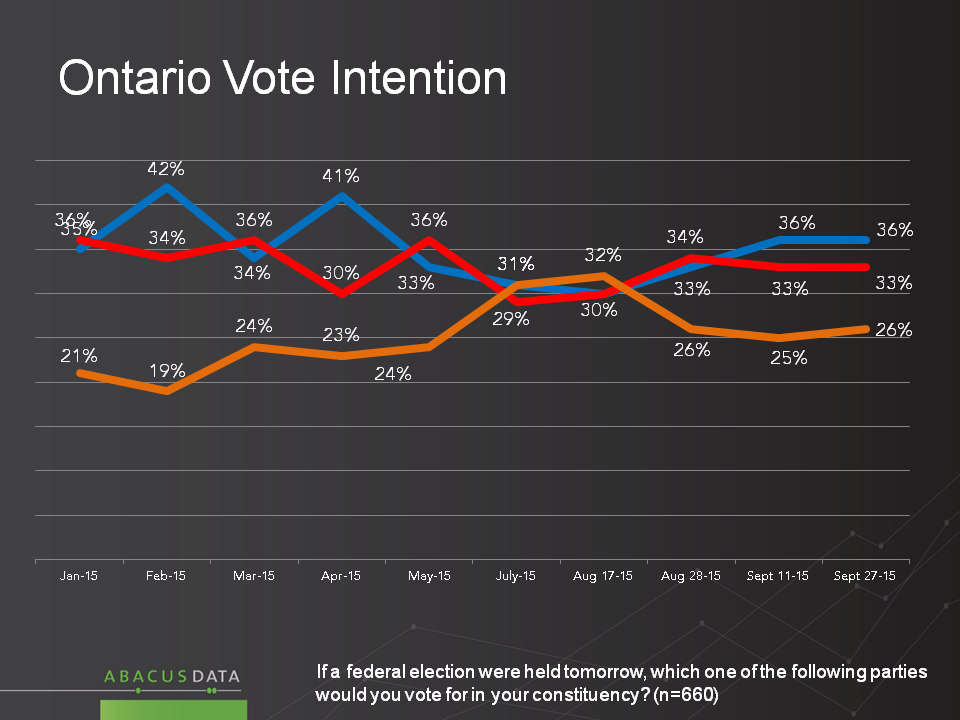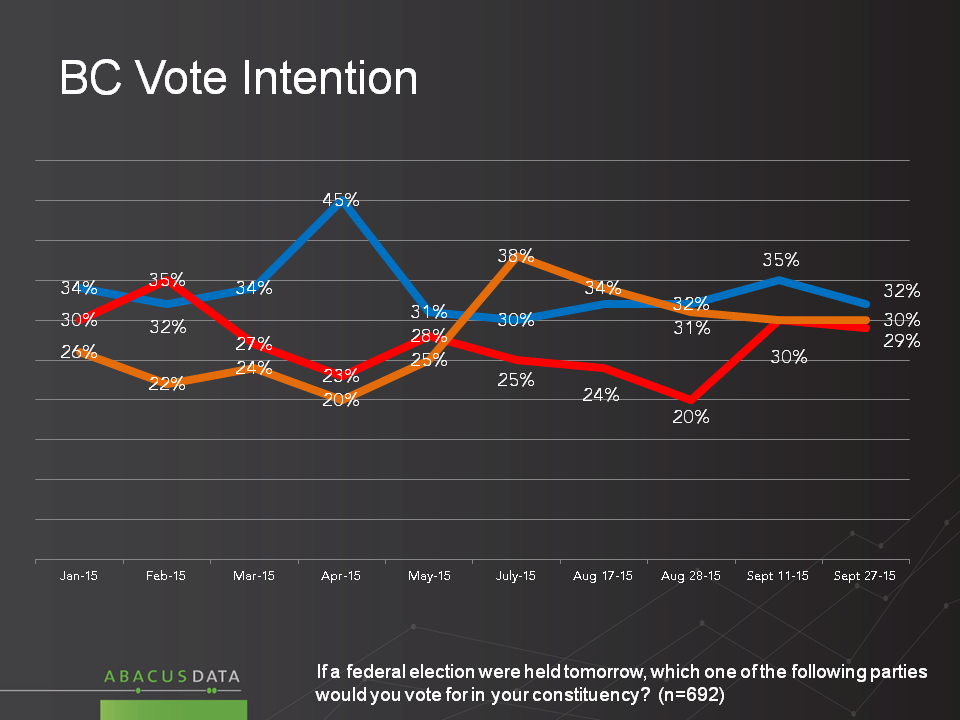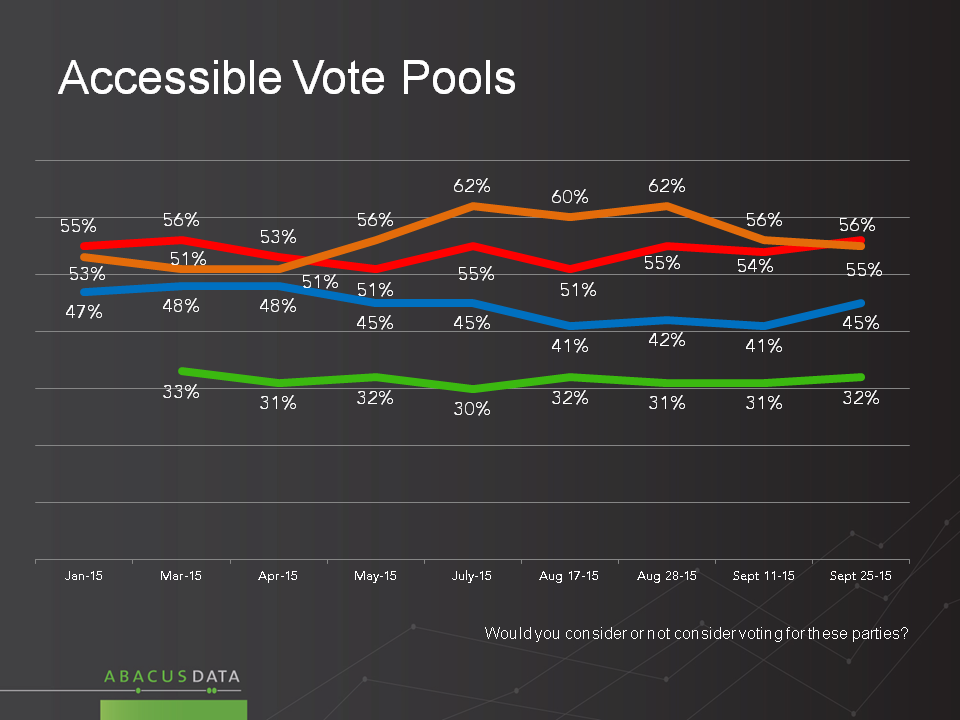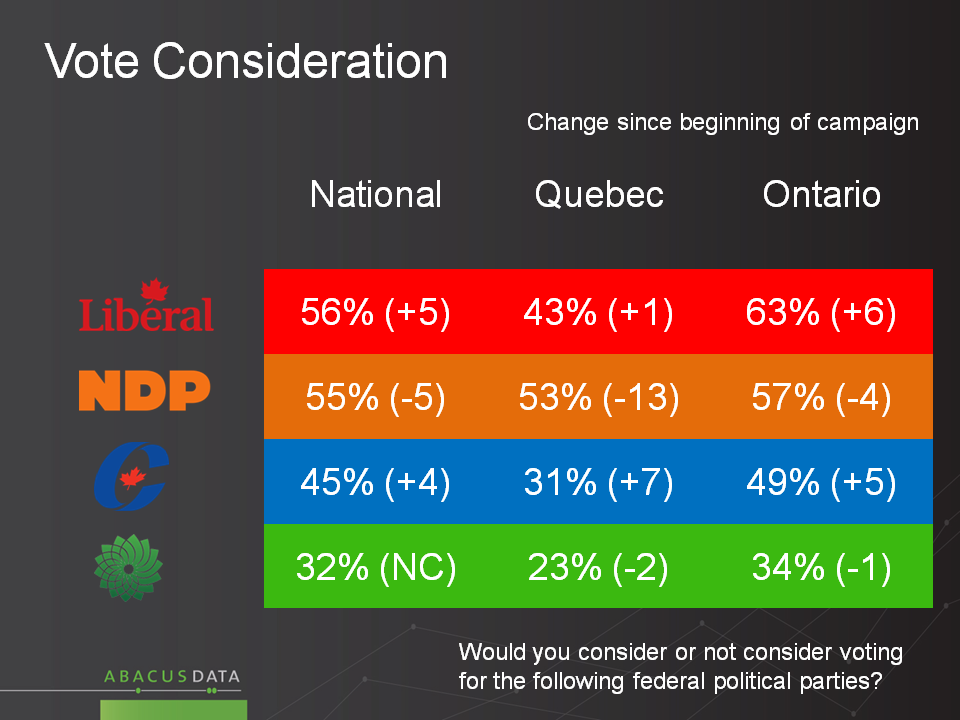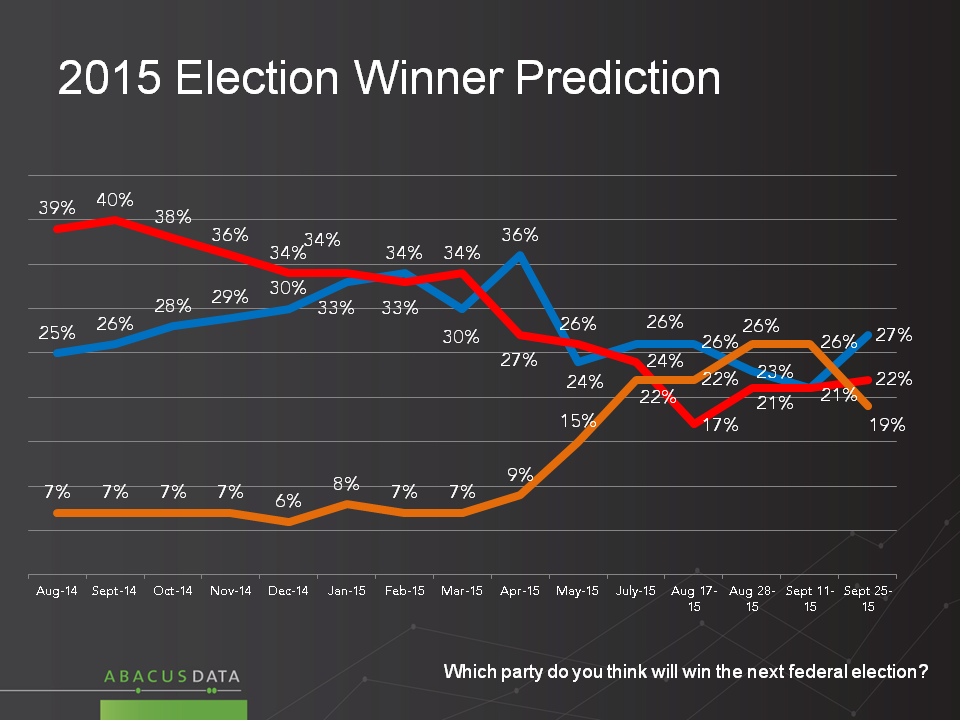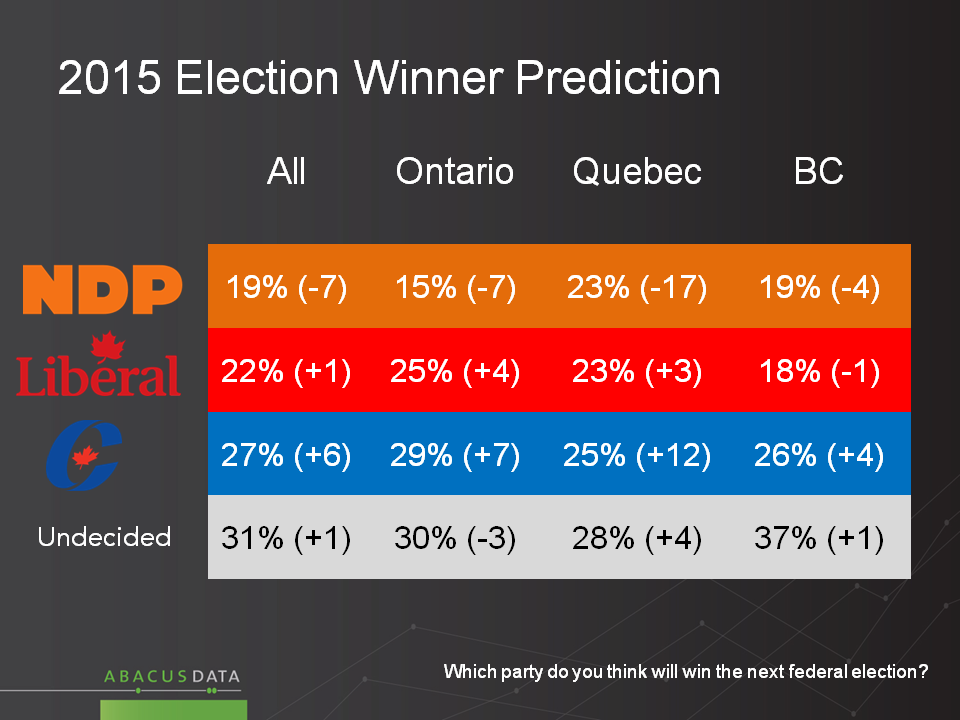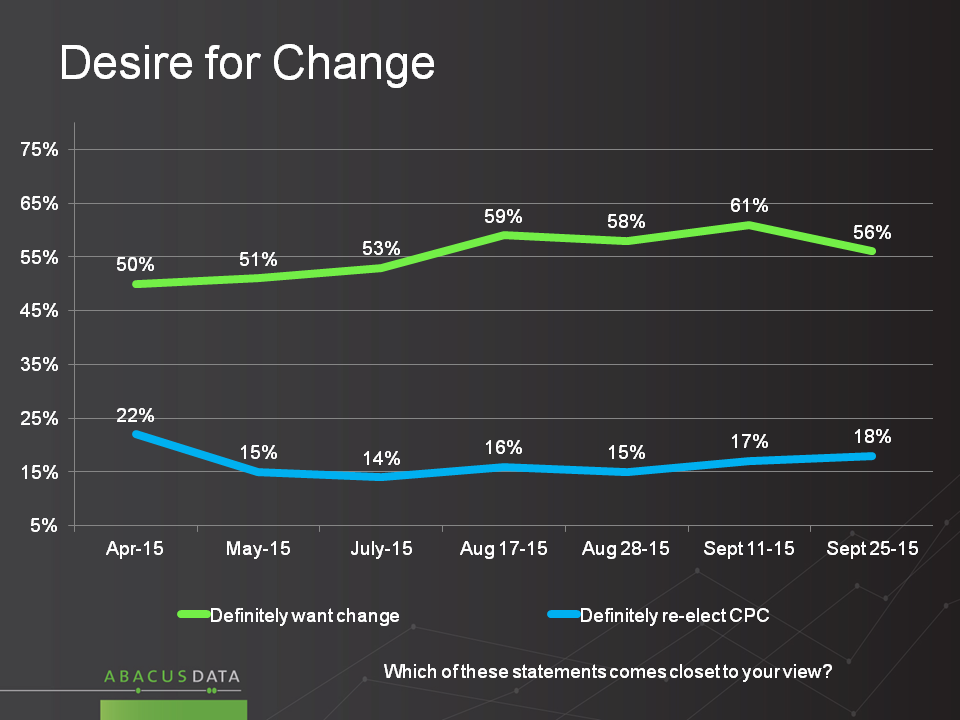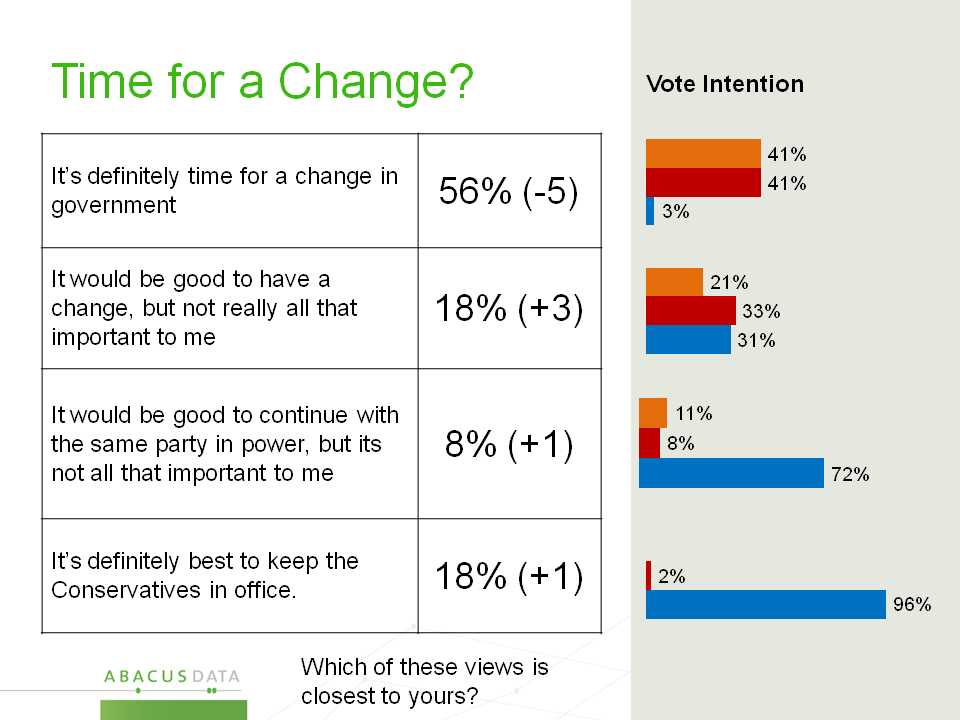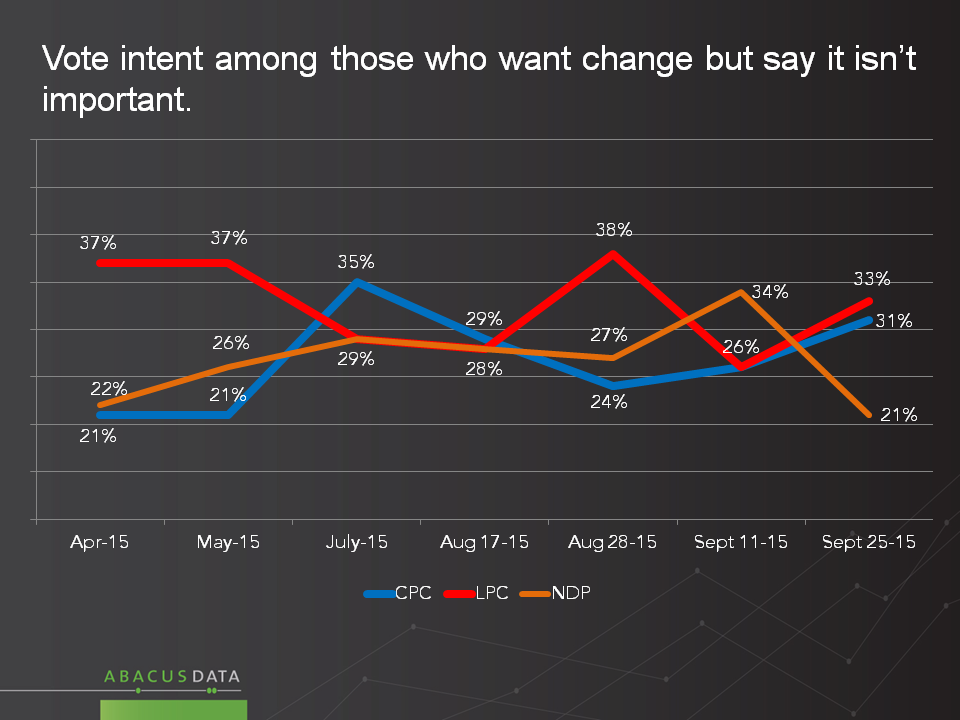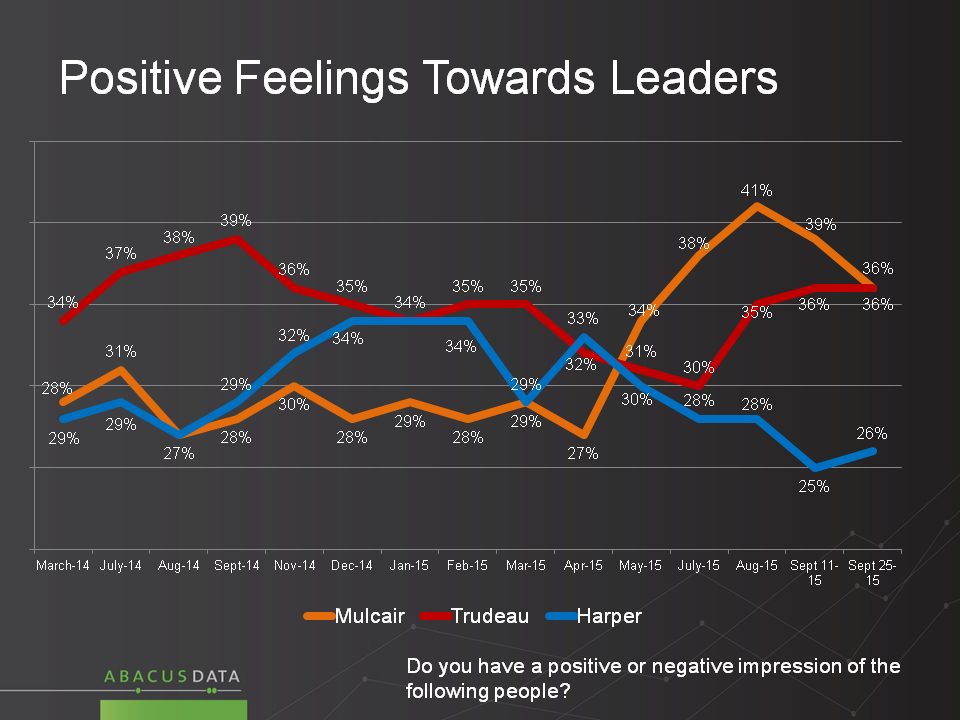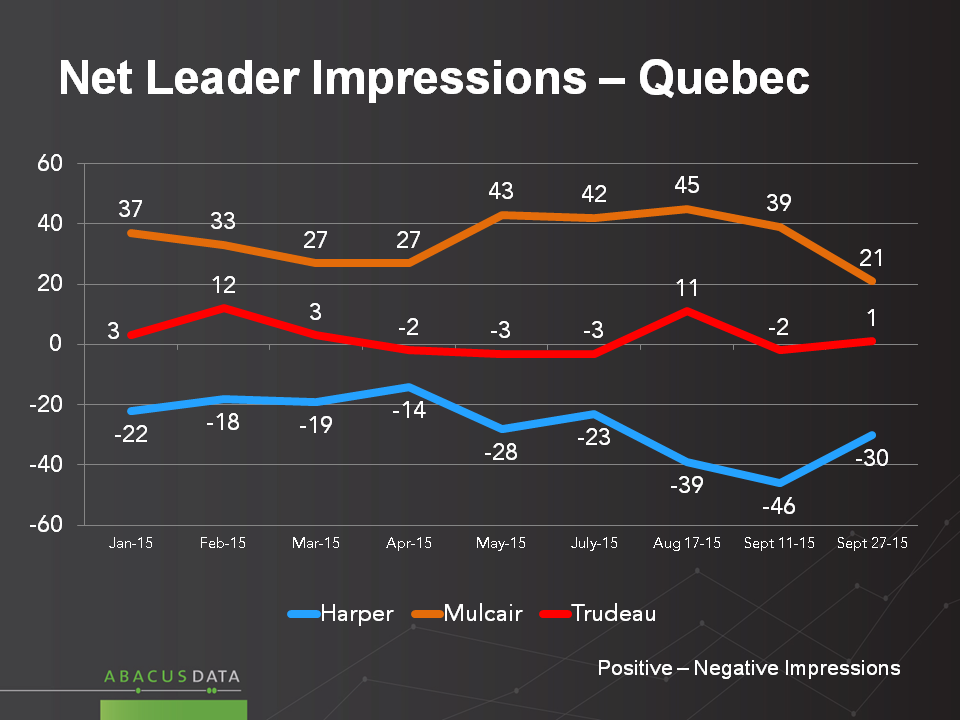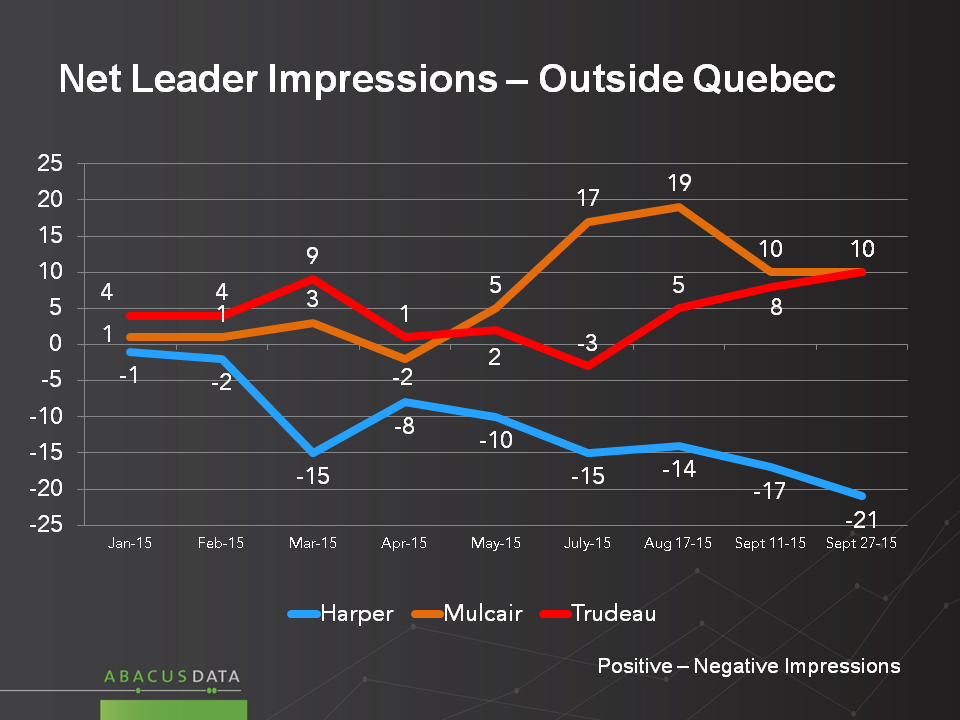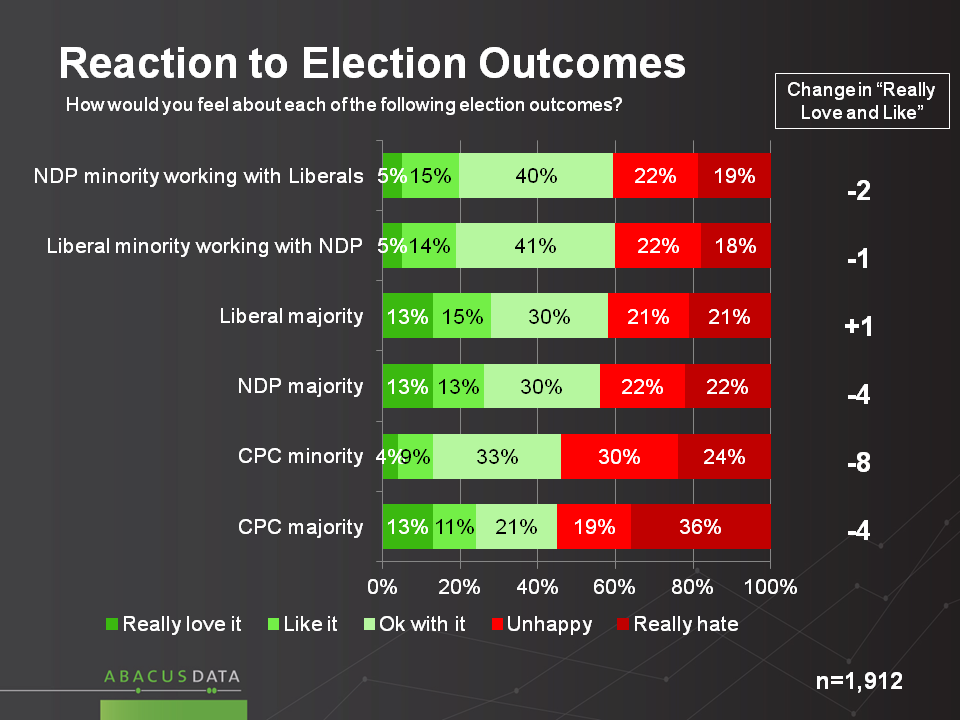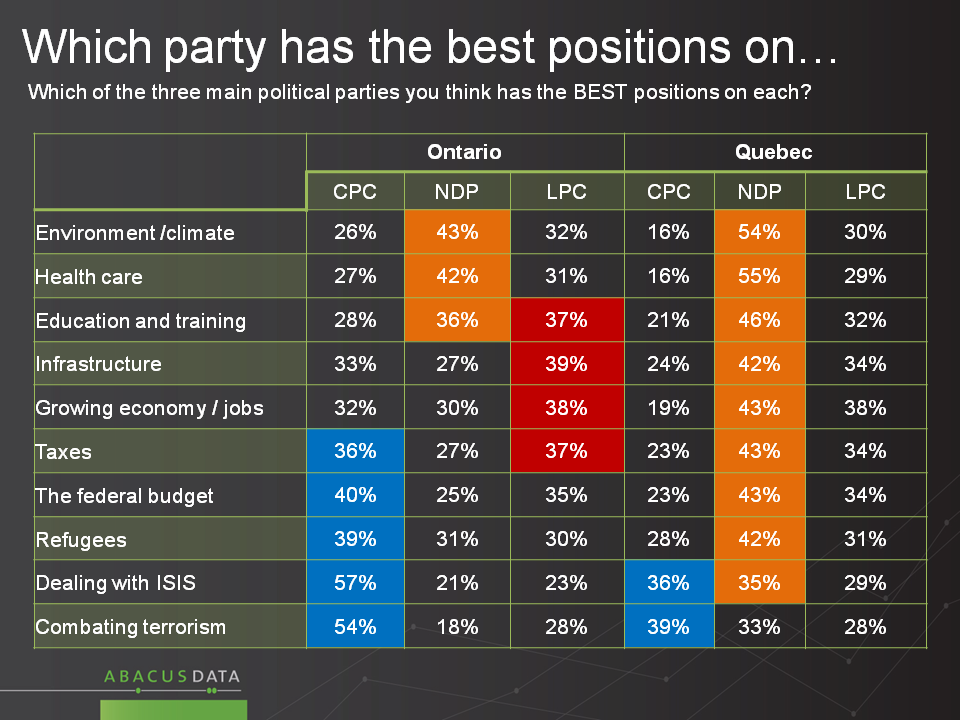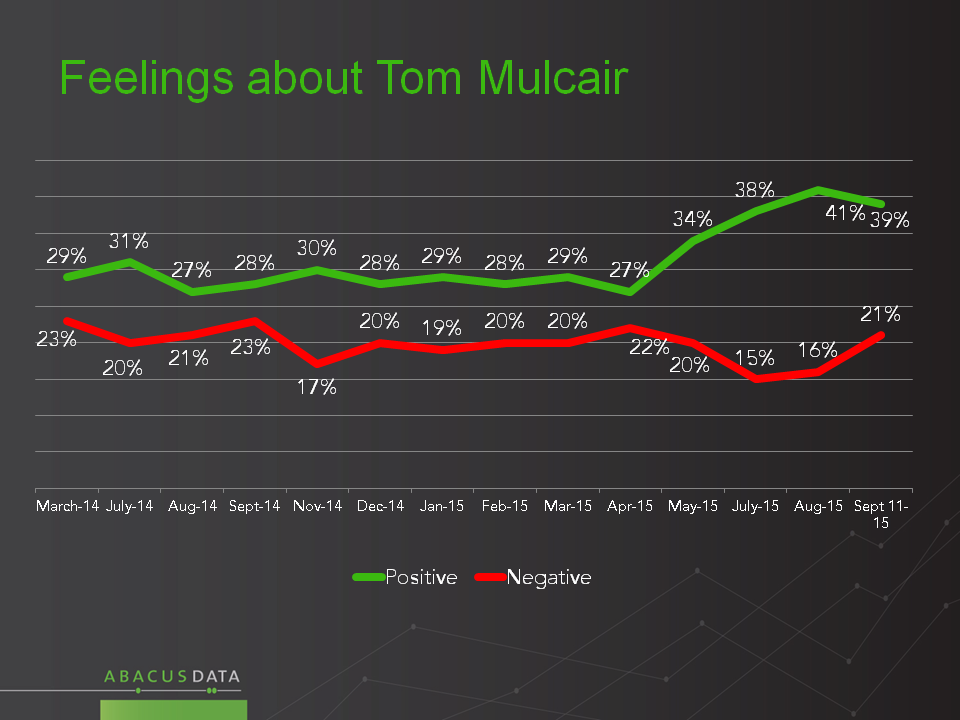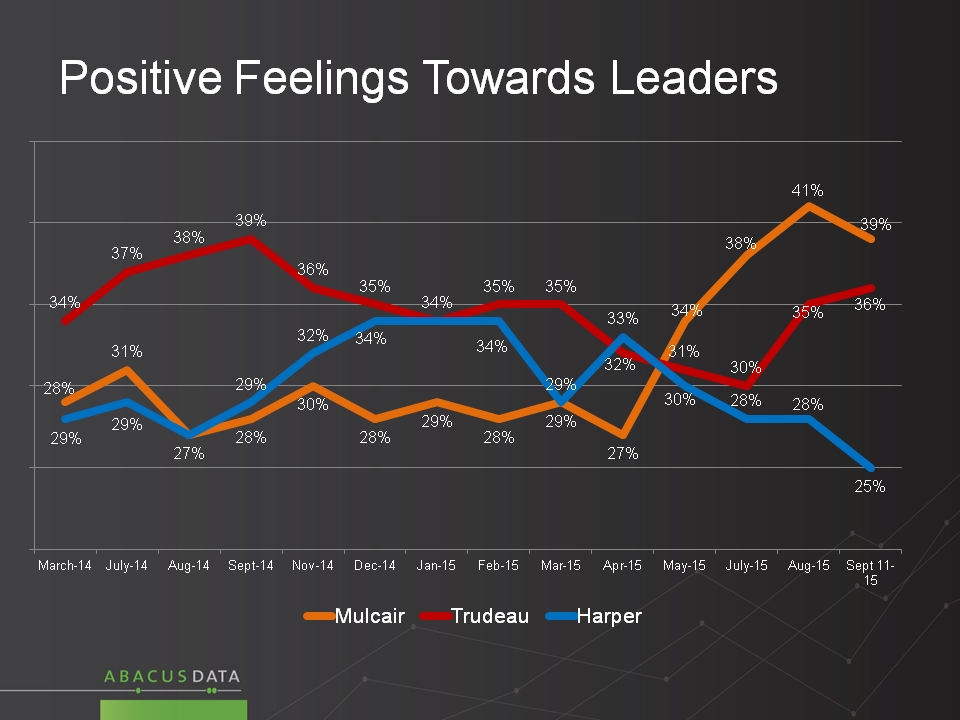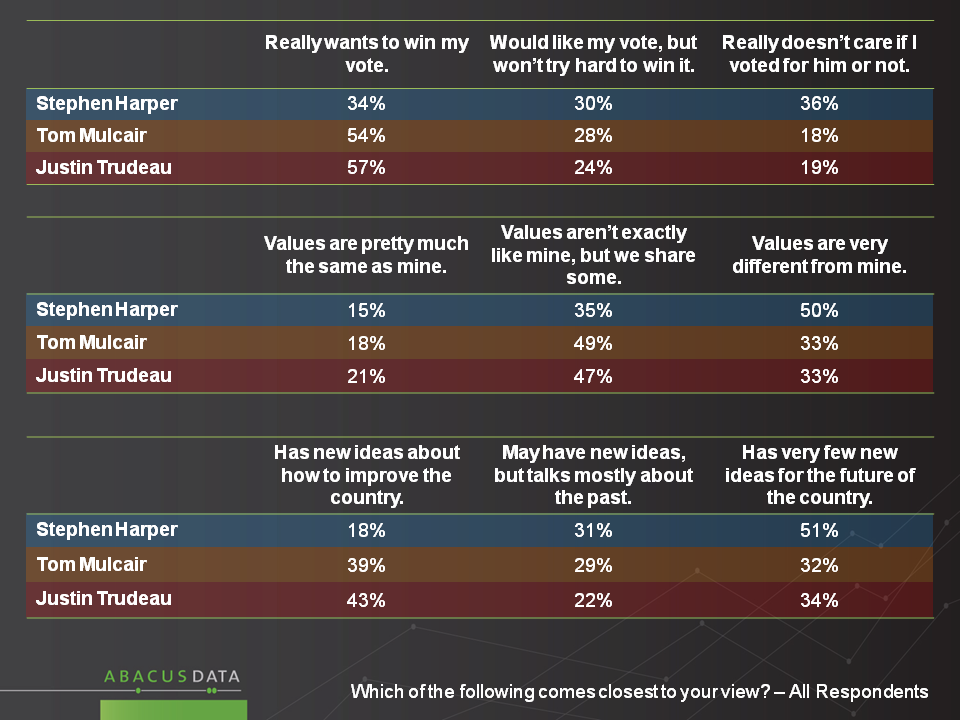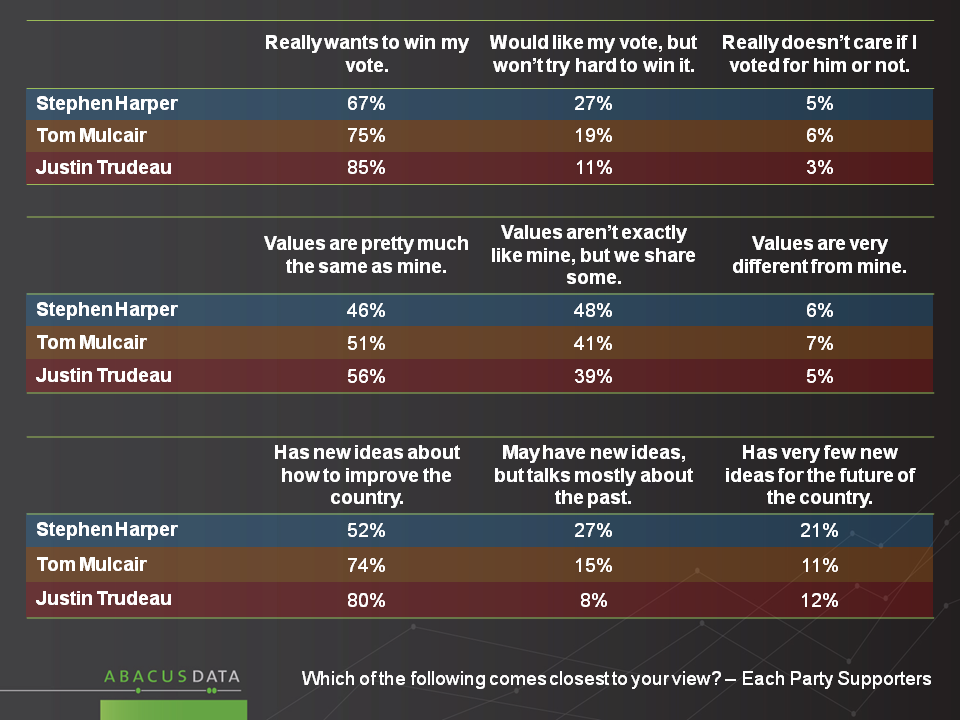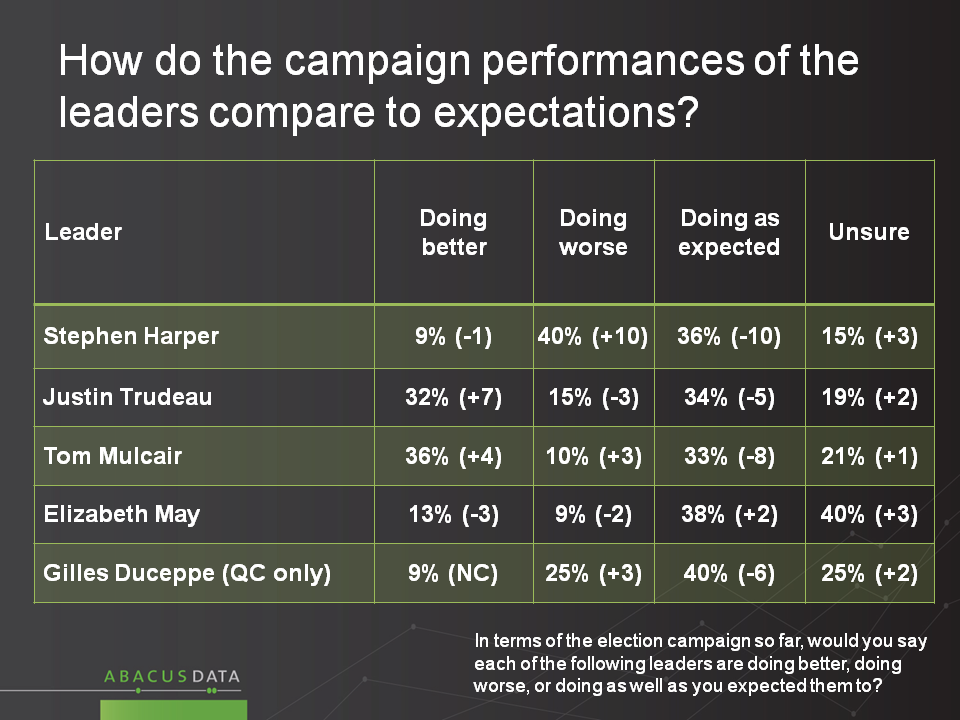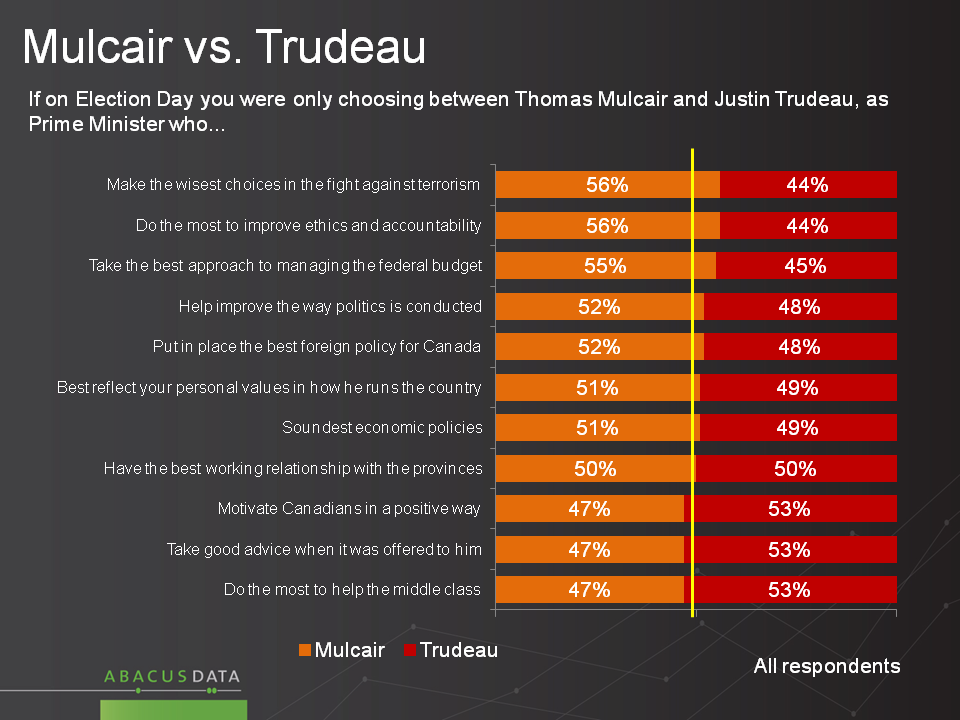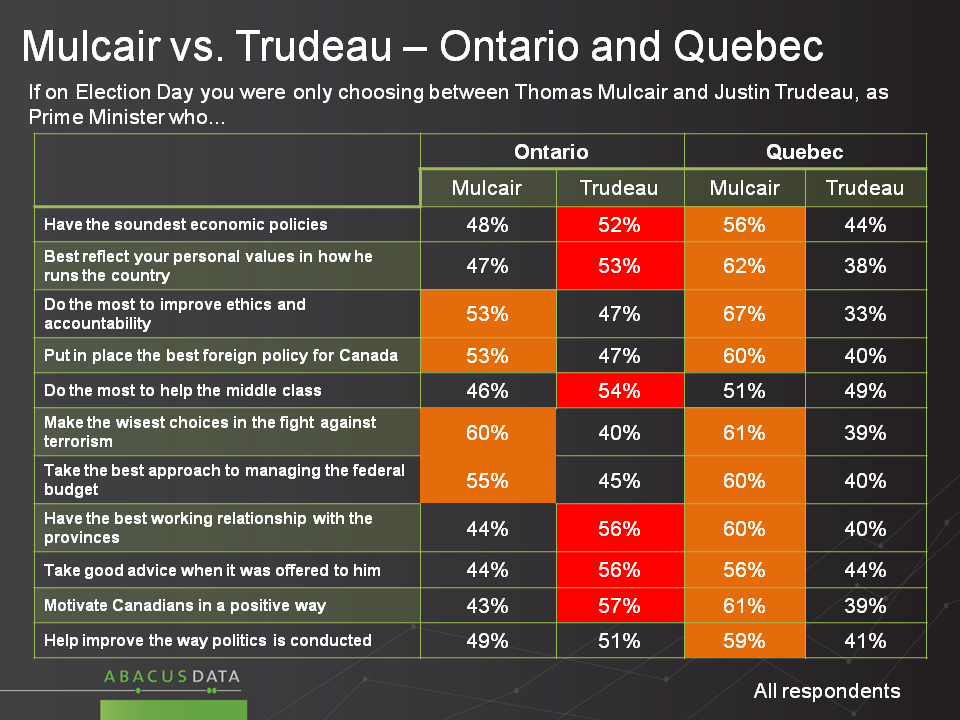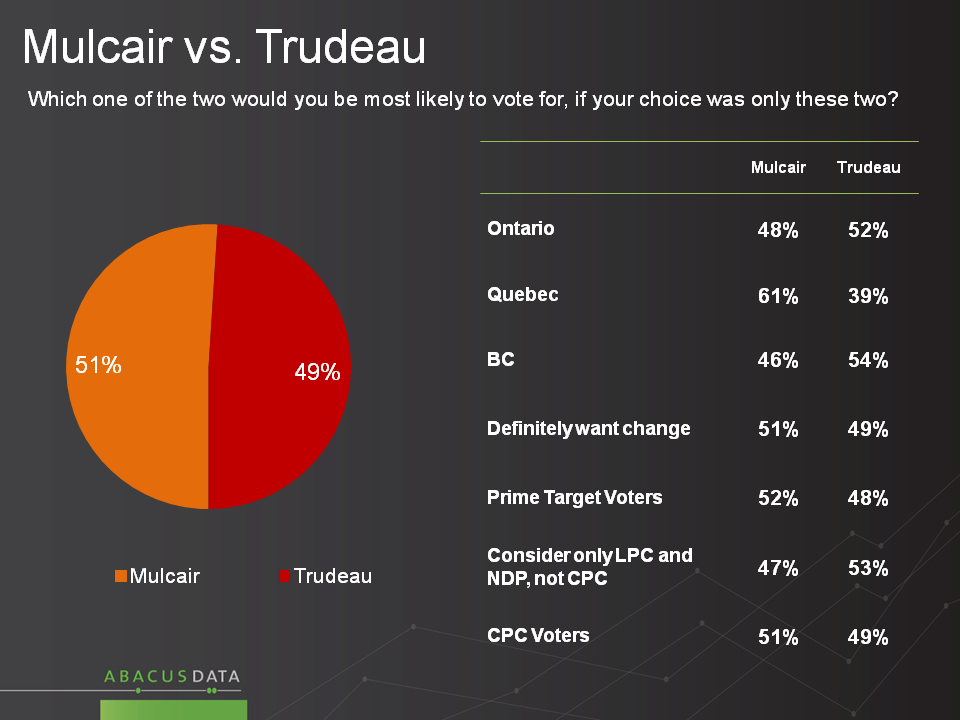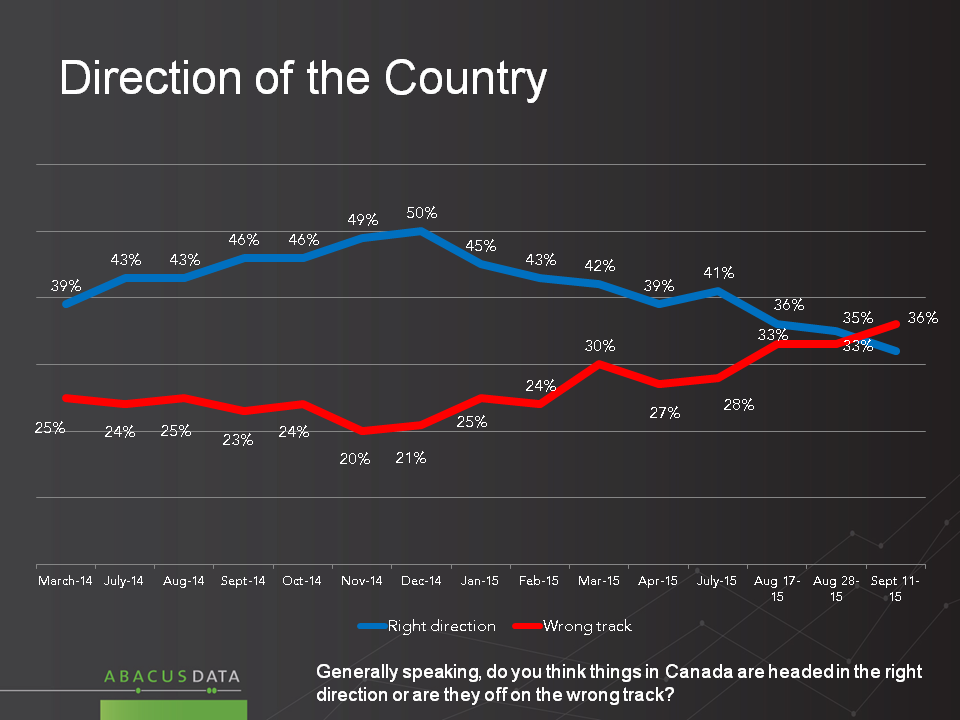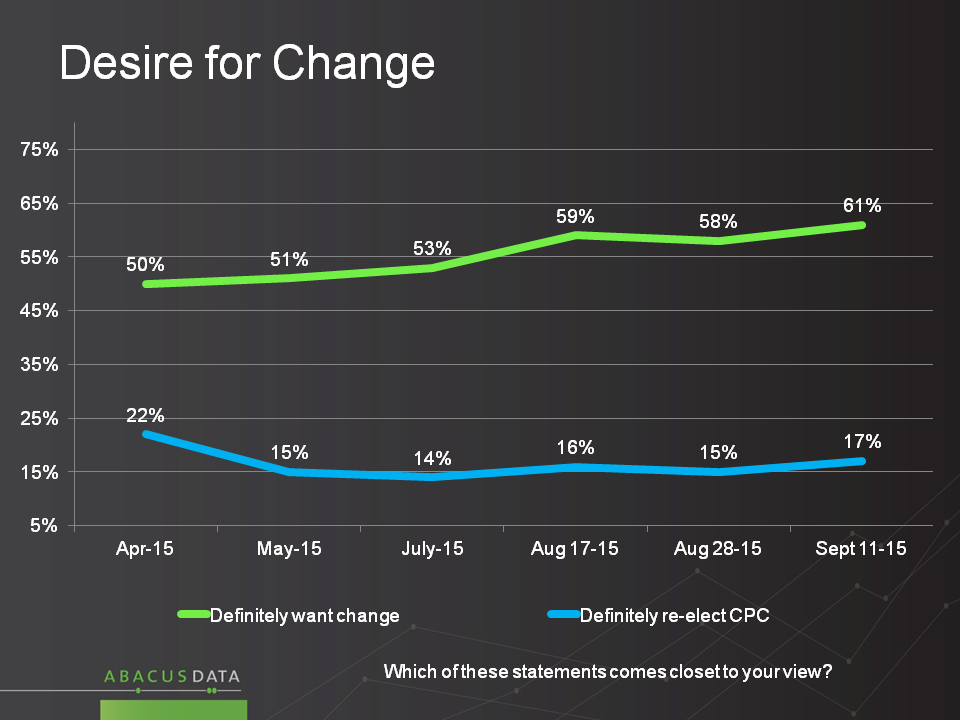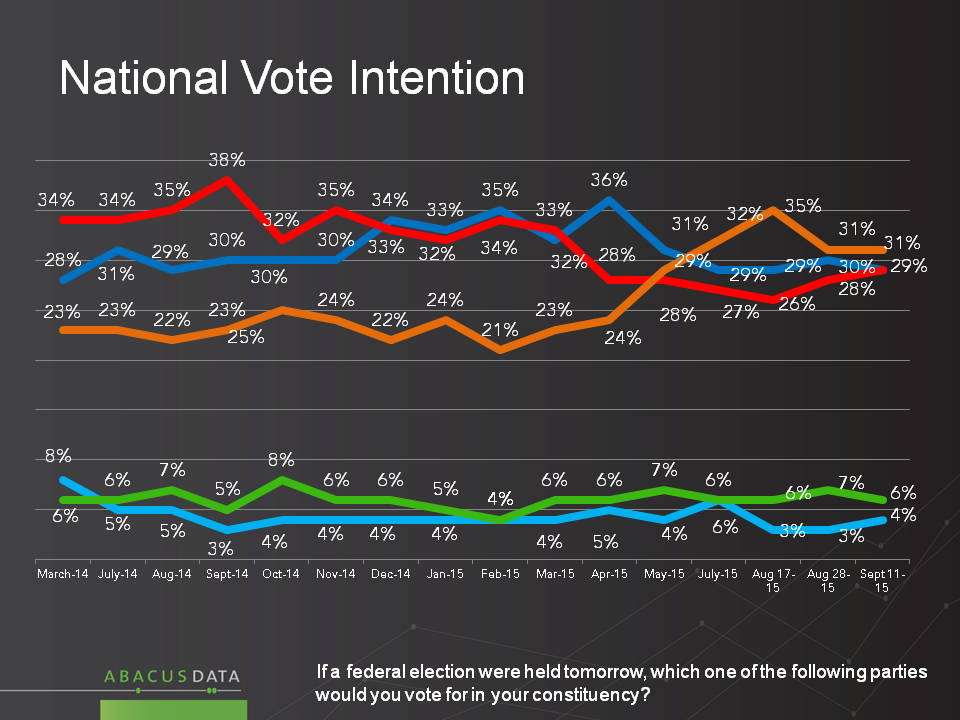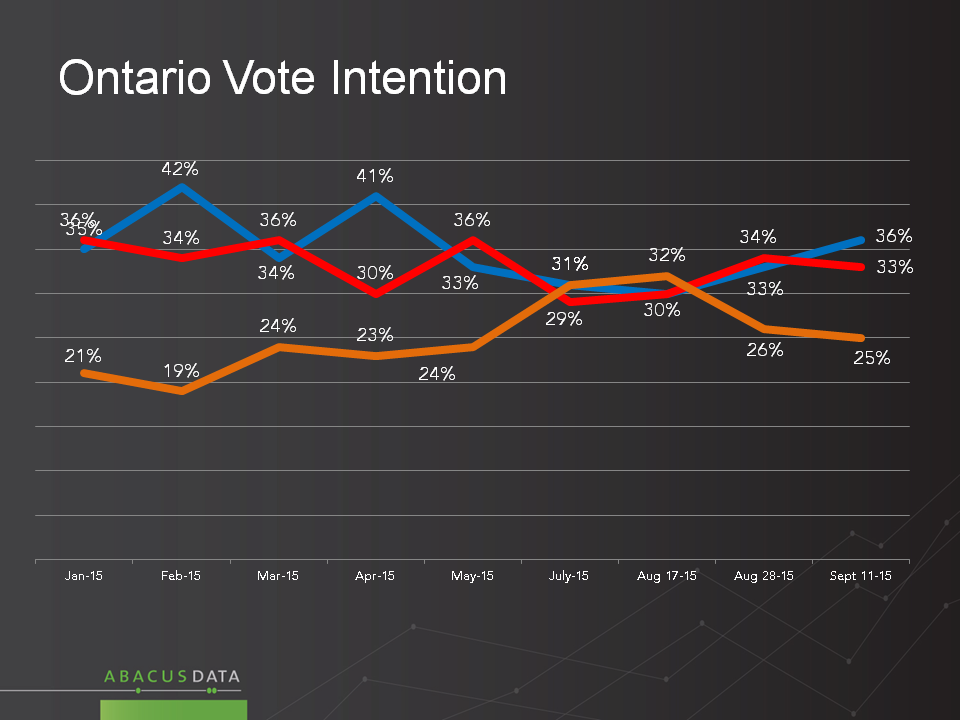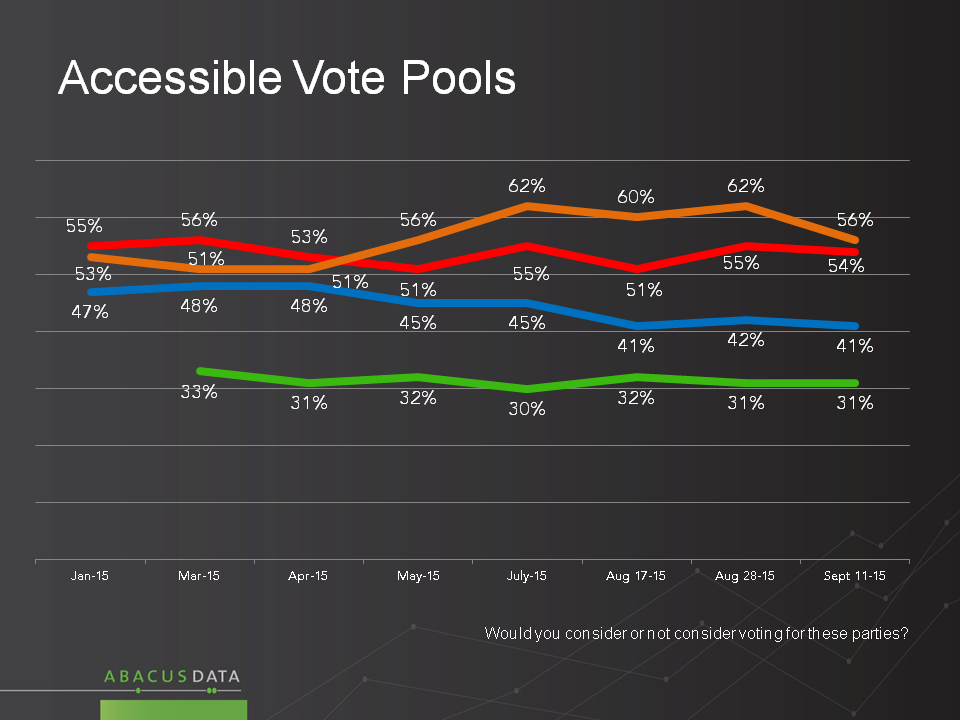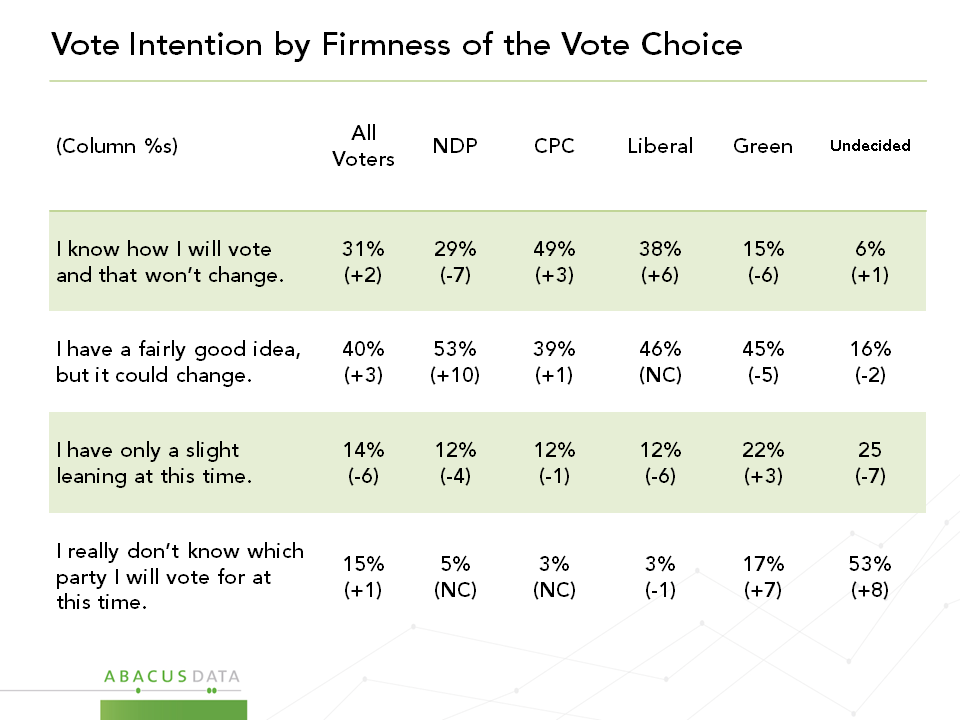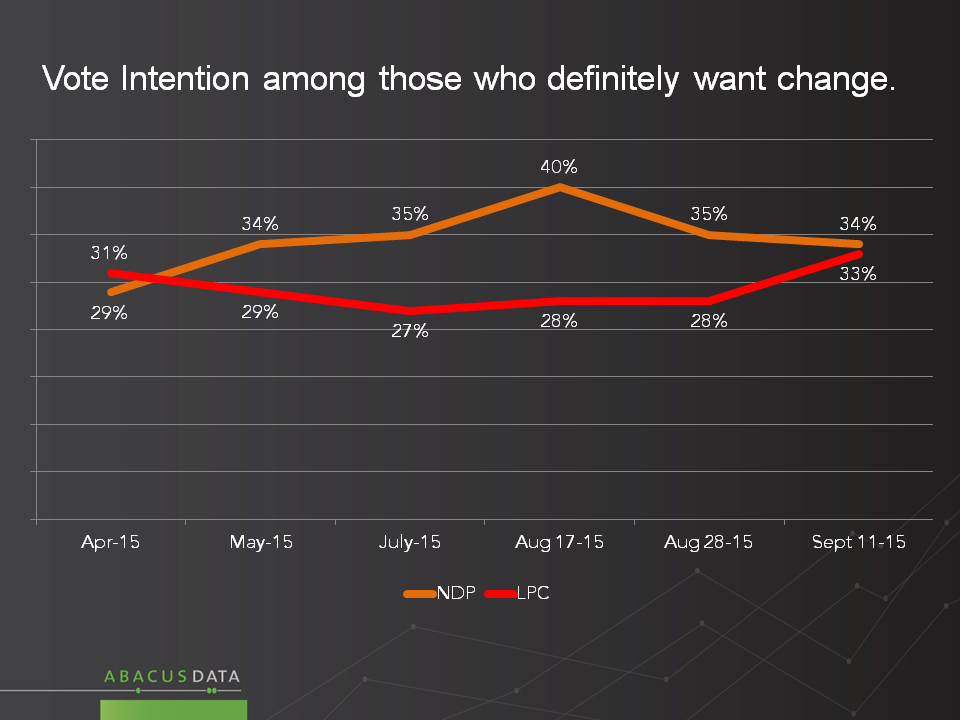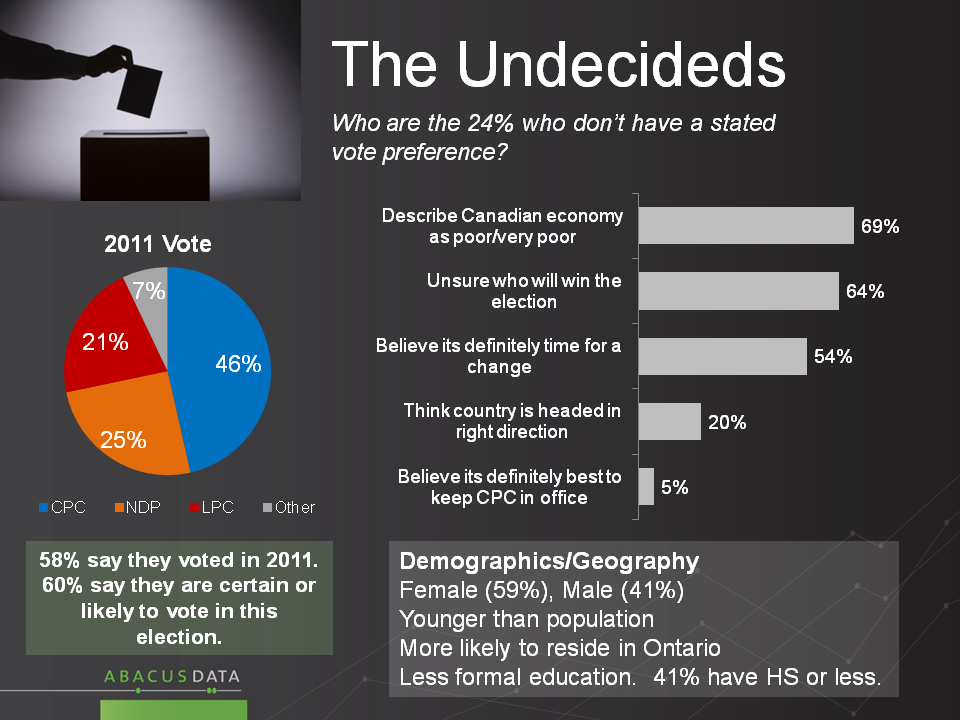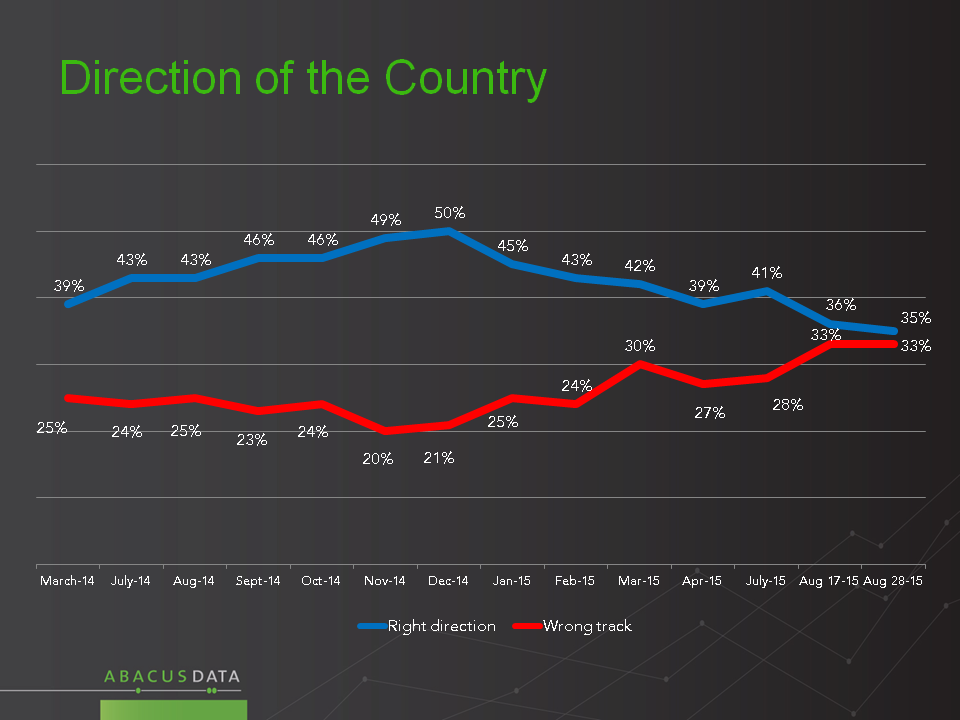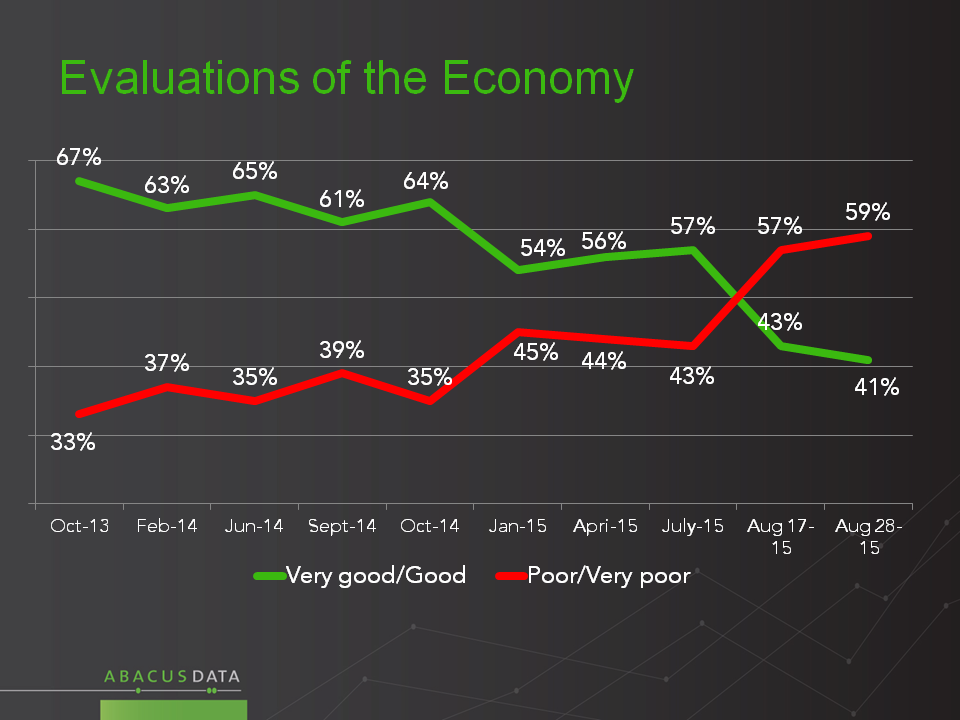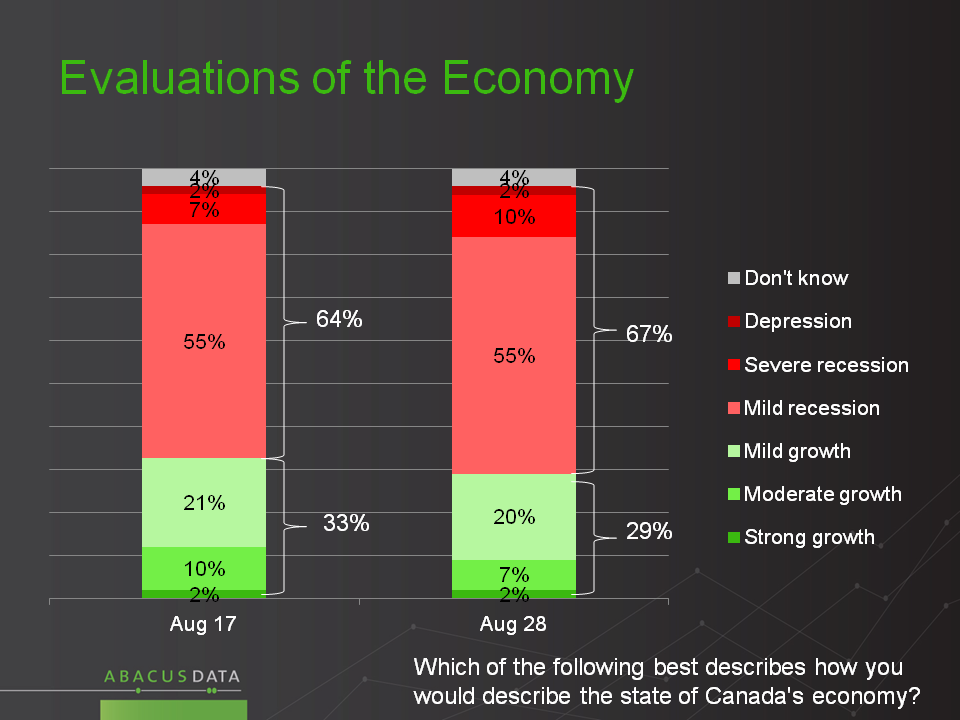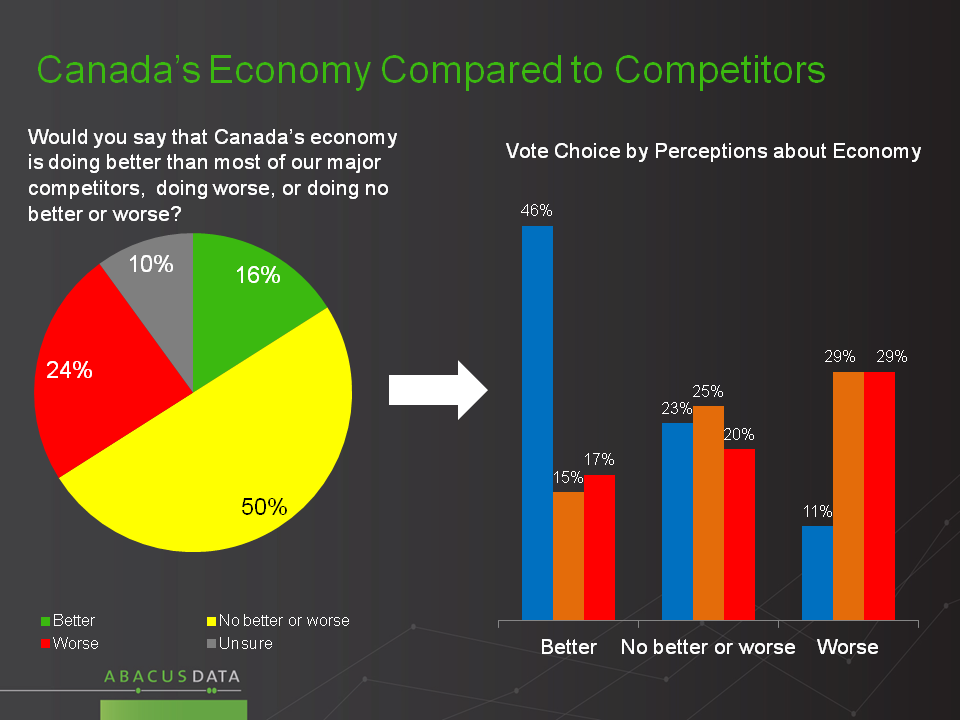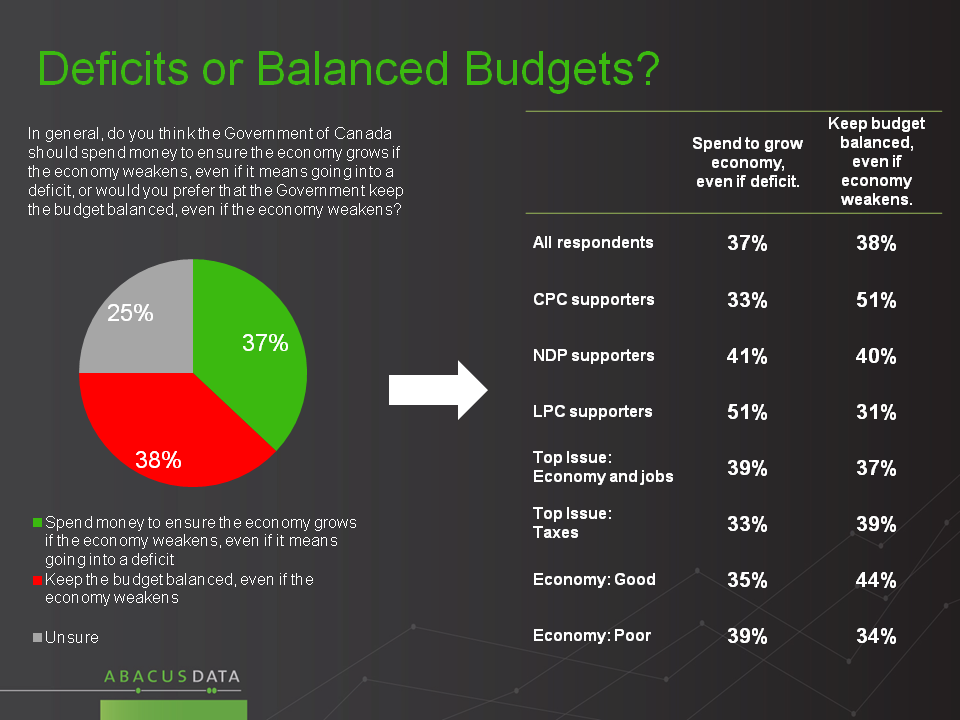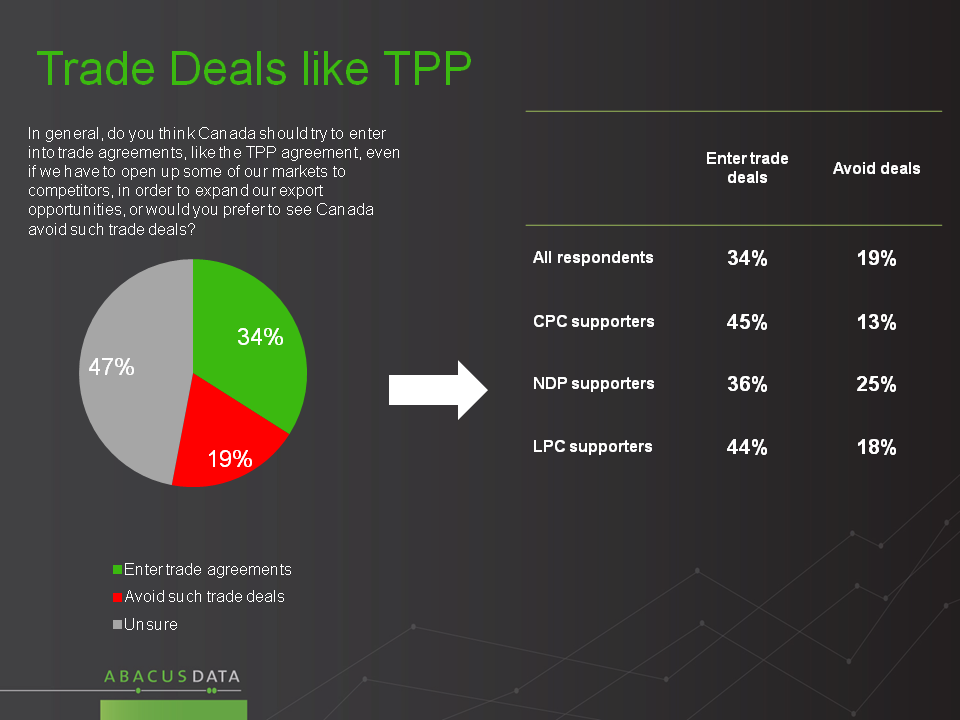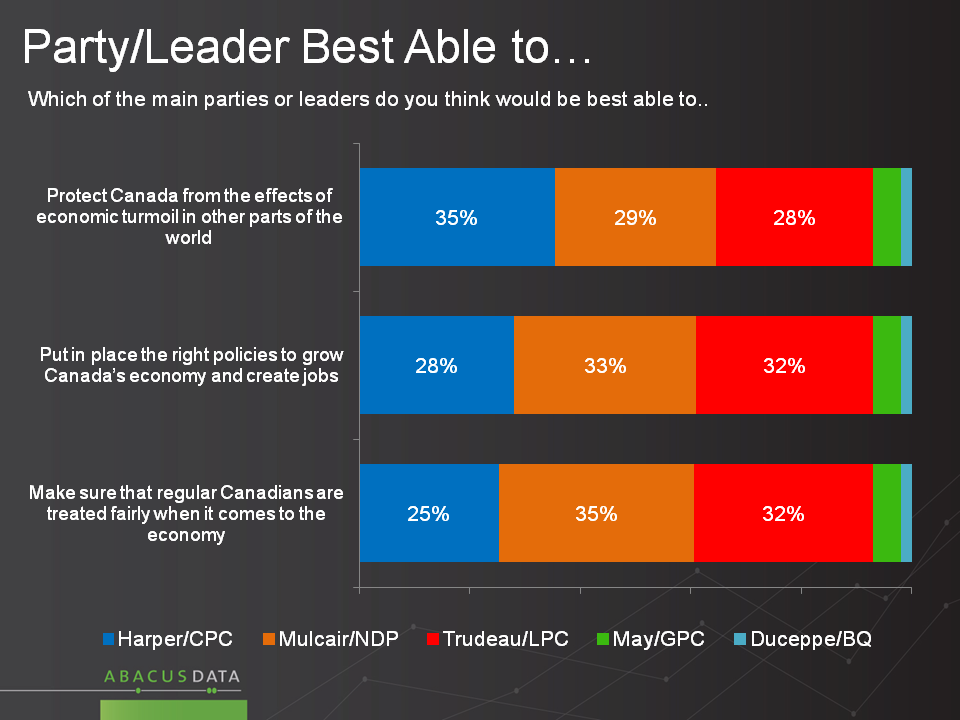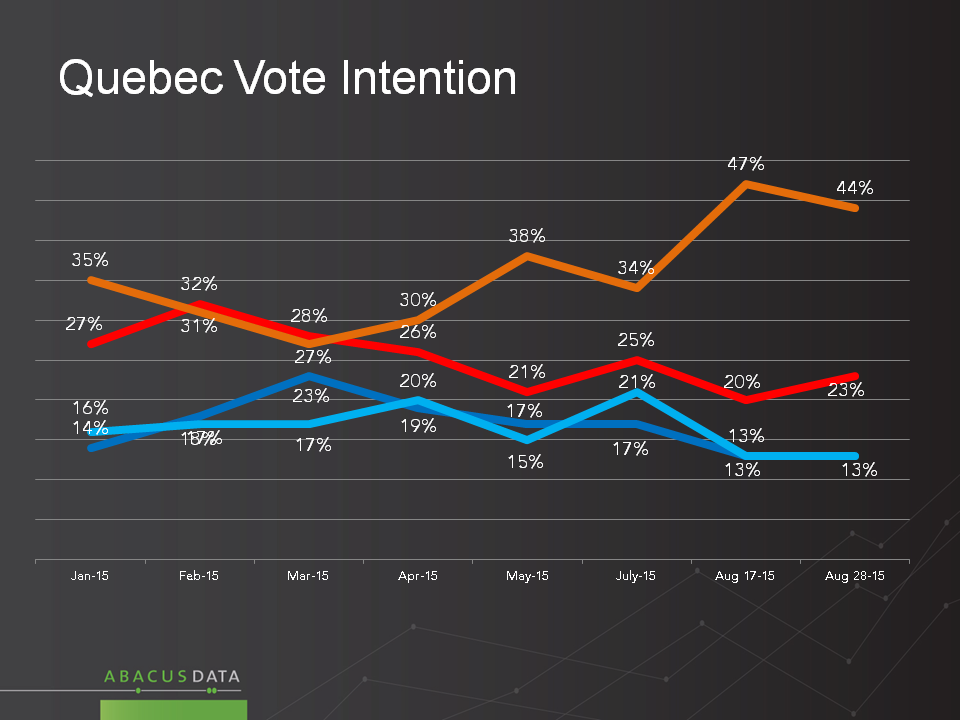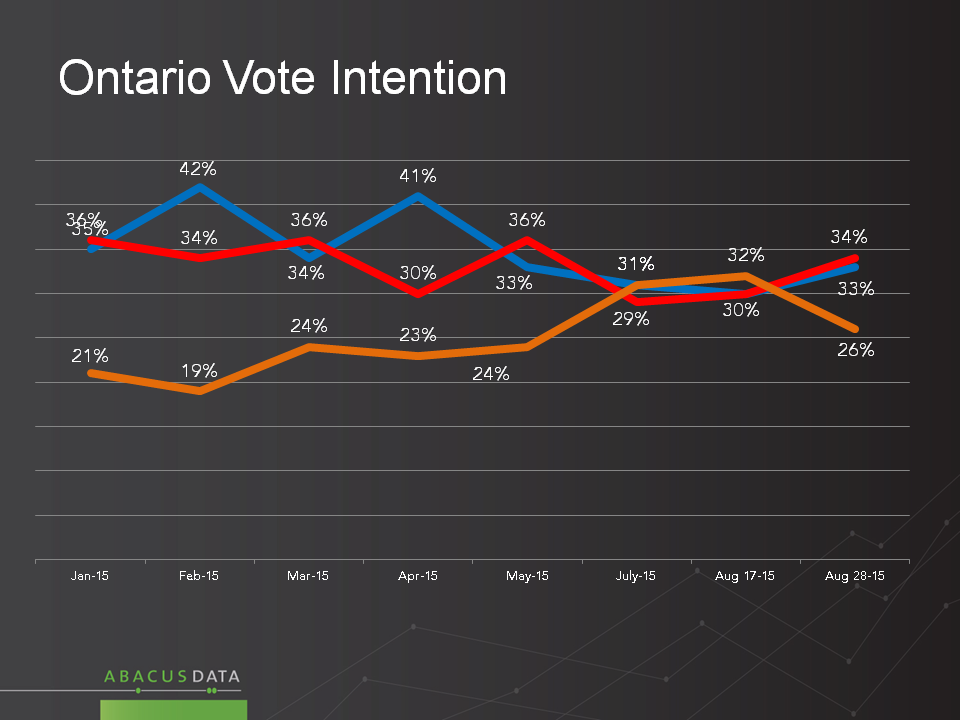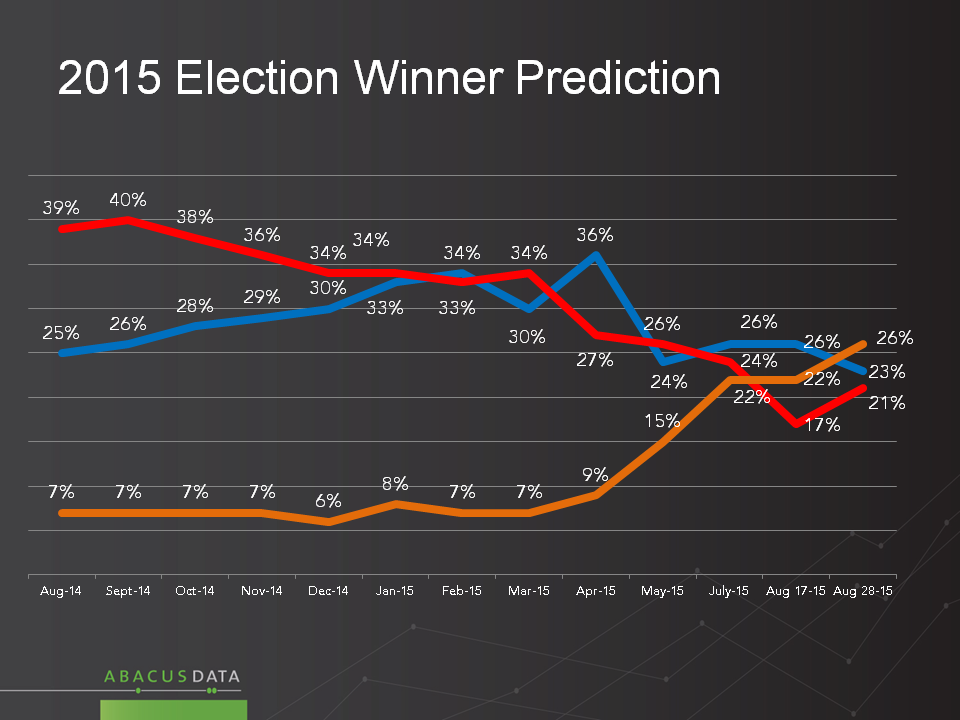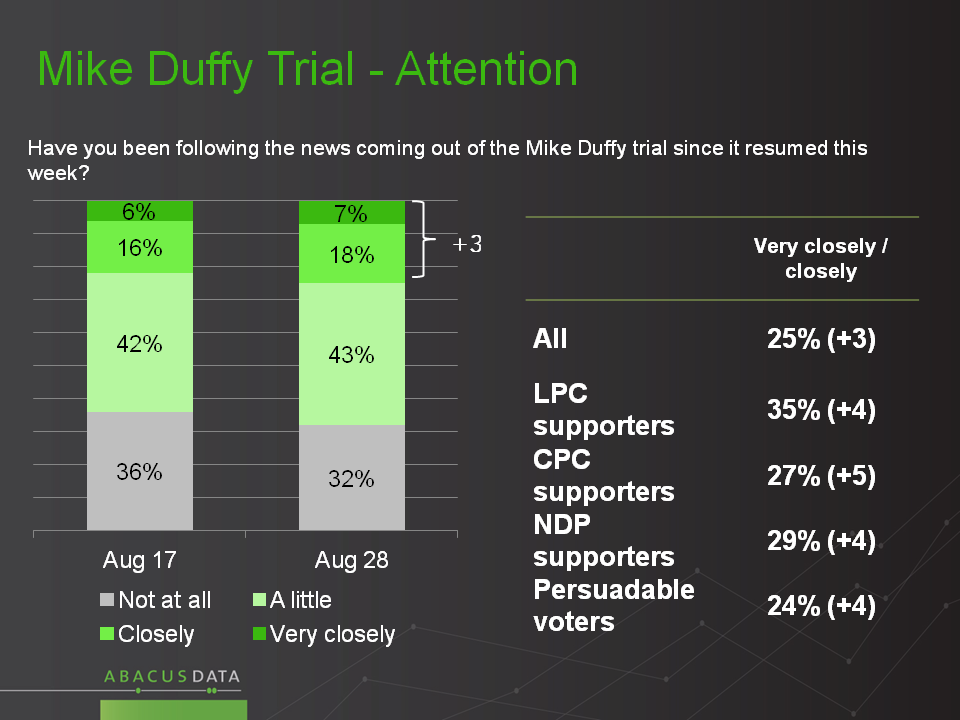The Case for Change vs. The Case for No Change
Canadians split on whether the country is on the right track
37% of Canadians say the country is on the wrong track while 36% feel the opposite. Since the beginning of the campaign, the country has been remarkably split, an indicator of just why this election is so hard to predict.
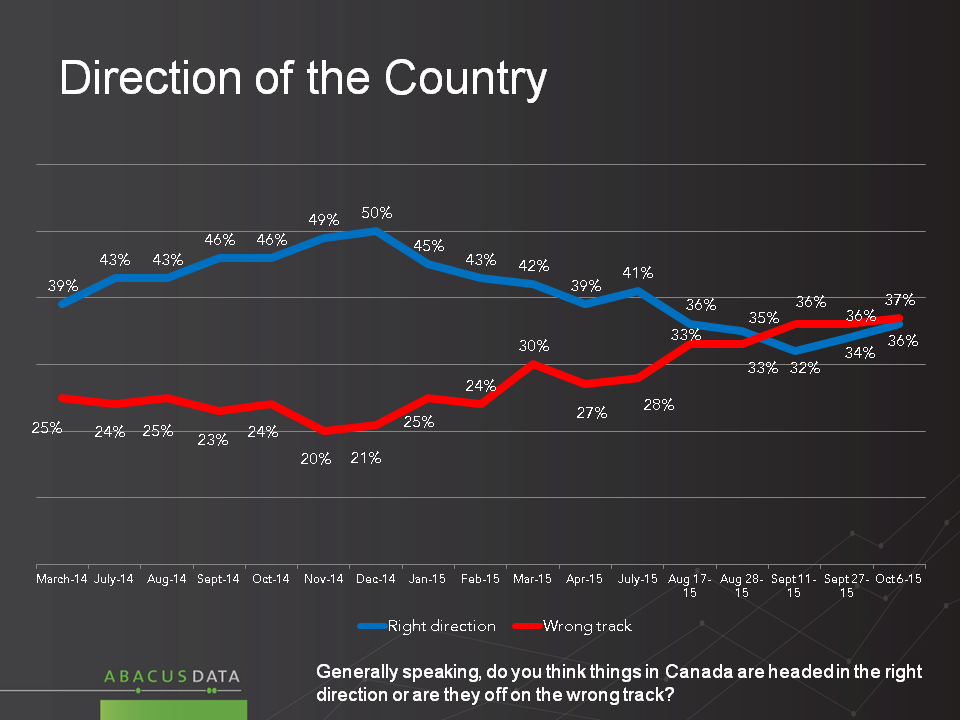
Among those voters who think the country is headed in the right direction, 58% support the Conservatives, 22% will vote Liberal, and 14% NDP.
Among those who think the country is off on the wrong track, the Liberals have a 9-point advantage over the NDP, 43% to 34%. 12% of these “wrong track” voters are planning to vote Conservative.
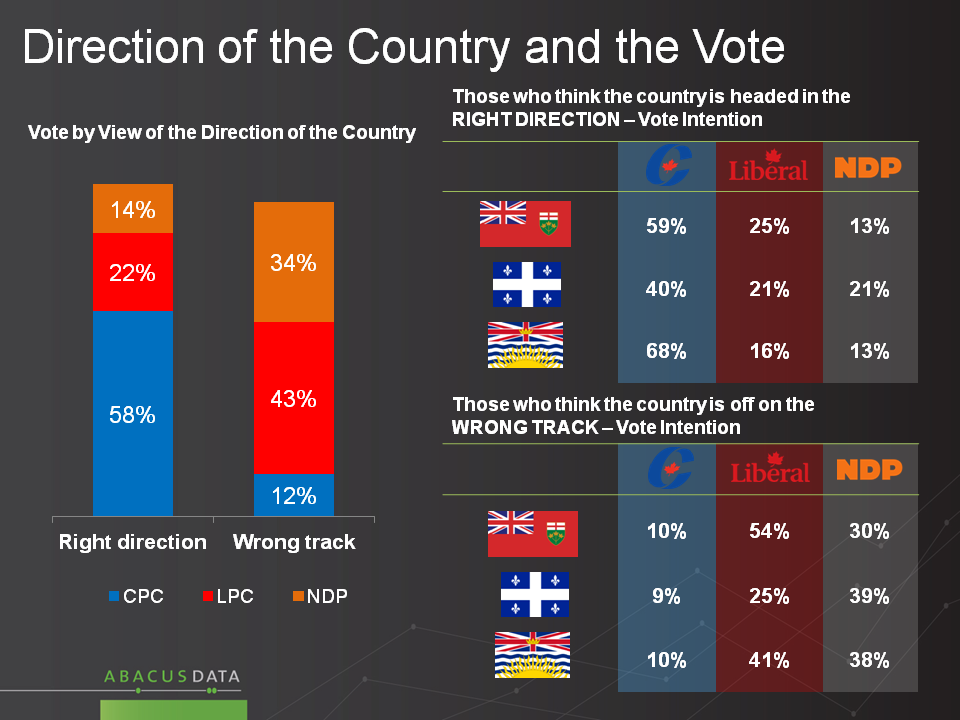
This underscores two things: the Conservatives are challenged by the fact that not everyone who thinks things are going well are inclined to vote Conservative; the Liberals are challenged by the fact that they are dividing the wrong track vote with the NDP.
A total of 73% Want Change, 57% feel strongly that way.
There has been very little movement in the number of people who are strongly in favour of replacing the Conservatives, which stands at 57%, nor has there been any real growth in the number of people who are sure they want the Conservatives re-elected, which stands at 18%
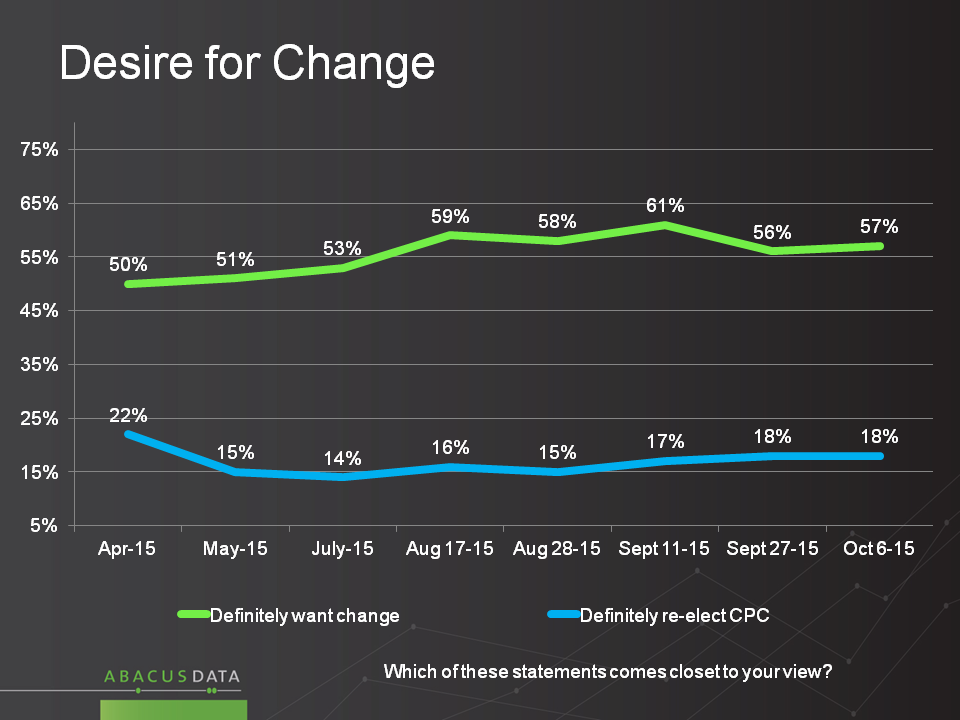
Among the voters who most want change, the Liberals were 16 points behind the NDP when the campaign began, and are 7 points ahead of the NDP now. This is perhaps the most important movement of any that we’ve witnessed in this campaign so far.
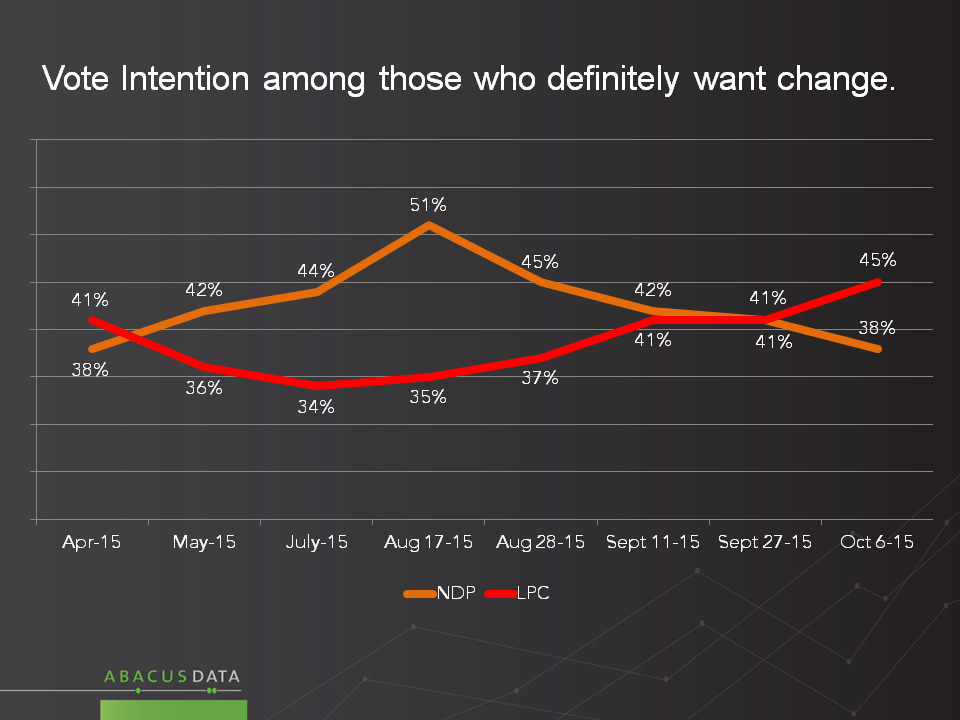
The Leaders’ Performance
In the biggest seat markets, Ontario, Quebec and BC, a plurality now says that Liberal leader Justin Trudeau has been performing best in the campaign. Across the country, Trudeau was the pick of 16% when the campaign first got underway, and is now picked by 28%.
Among those voters who most want change, and among Liberal-NDP swing voters, Mr. Trudeau scores well ahead of the other leaders on this question.

Trans Pacific Partnership
While 42% of voters don’t yet have a view on whether the TPP will be a good thing or a bad thing for Canada, of those who do, 3 have a positive view for every 1 who sees it negatively.
Worth noting is that the tendency even among NDP voters is to think it is more likely to be good (37%) for Canada, rather than bad for Canada (21%). Among Liberal-NDP swing voters, the split is 36% good/22% bad.
In BC and Quebec, two critical markets for the NDP, roughly 1 in 2 voters has a positive view of the deal, and fewer than 15% have a negative view. In Ontario, the split is 41% positive/16% negative.
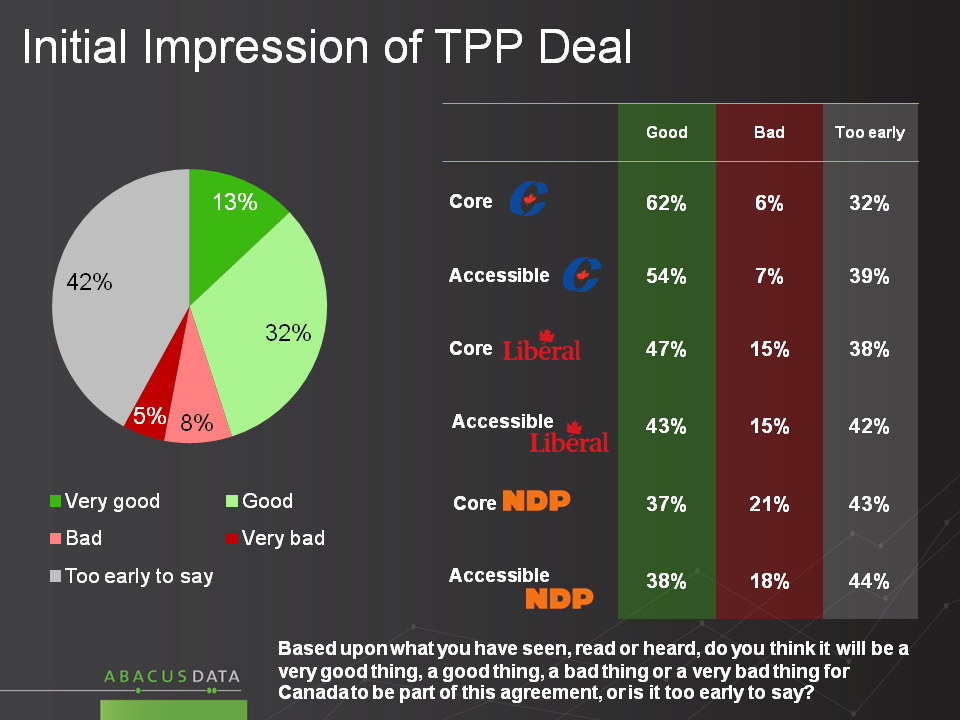
Looking at the core and accessible voter pools for each party, we find that respondents are more likely to consider TPP a good thing than a bad thing, even among those who say they will vote NDP. While resistance to the deal is higher among NDP supporters, a plurality think the deal is a good thing.
We described the position of each of the three main parties and asked what influence each would have on intentions to vote for that party. The results suggest that the deal may not provide a great deal of upside for the Conservatives and that NDP-Liberal swing voters are more drawn to the “pro-trade, but we’ll study it” position of the Liberals than the more aggressive sounding resistance to the deal that the NDP has voiced.
Overall, 16% say they are more likely to vote Conservative because they negotiated the TPP deal while 23% say they are less inclined to vote Conservative. 62% say it will have no impact on their vote. These patterns are fairly consistent across the three key provinces.
Core Conservative supporters and those who are open to voting Conservative are more likely to say they are more inclined to vote the incumbents because of the TPP deal, but a majority still say it will not affect their vote.
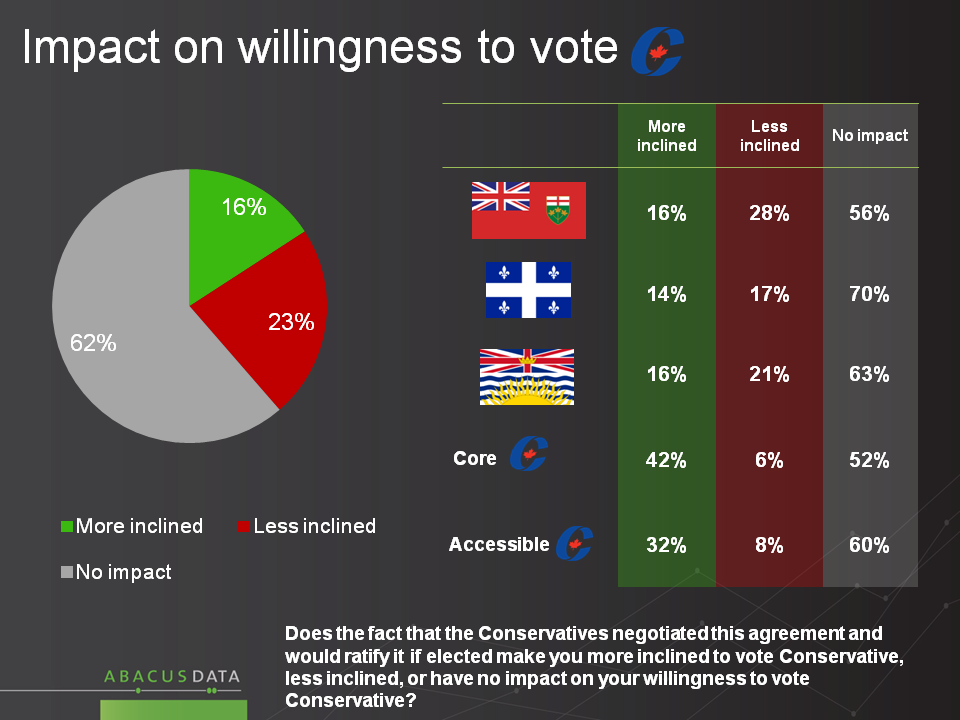
The Liberal position appears to be the most likely to draw supporters towards the party with 28% of all respondents saying they are more inclined to vote Liberal while 12% are less inclined.
Core Liberal and NDP/Liberal swing voters are more enthusiastic about the Liberal position than Conservative supporters are of the fact that the Conservatives negotiated the deal.
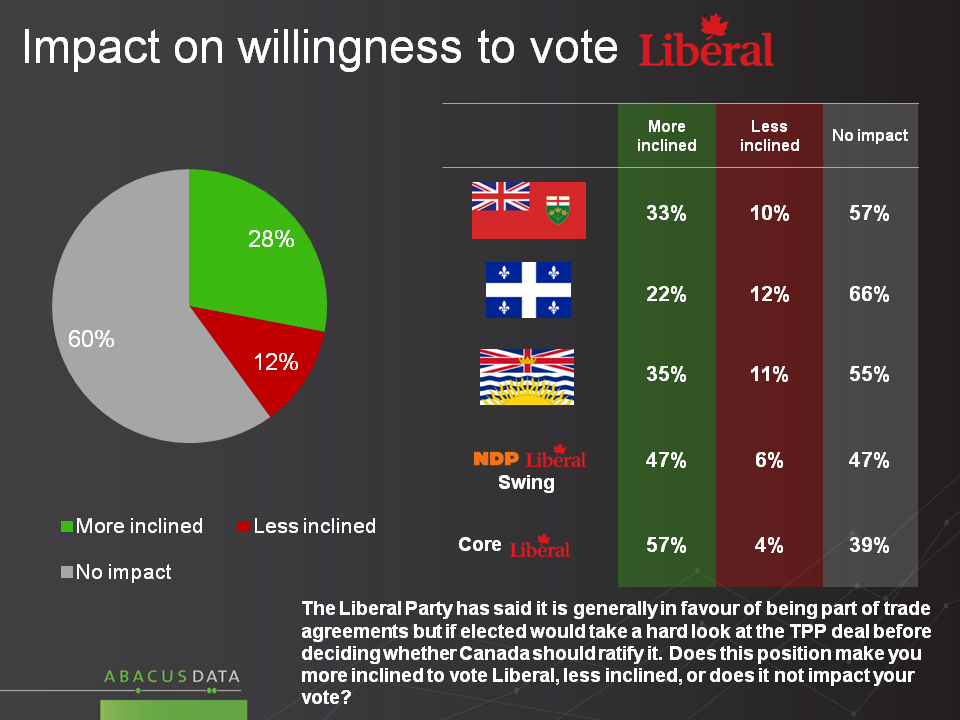
While the NDP has voiced strenuous concerns (“could be harmful – we will not be bound”) with the TPP deal, voter reaction to that position is more negative than positive. Overall, 18% say they are more inclined to vote NDP because of its position on TPP while 27% are less inclined. In Ontario, Quebec, and especially British Columbia, this pattern is consistent.
While the NDP position is a net gain among its current supporters, among Liberal-NDP swing voters, the Liberal position shows more vote pulling potential.
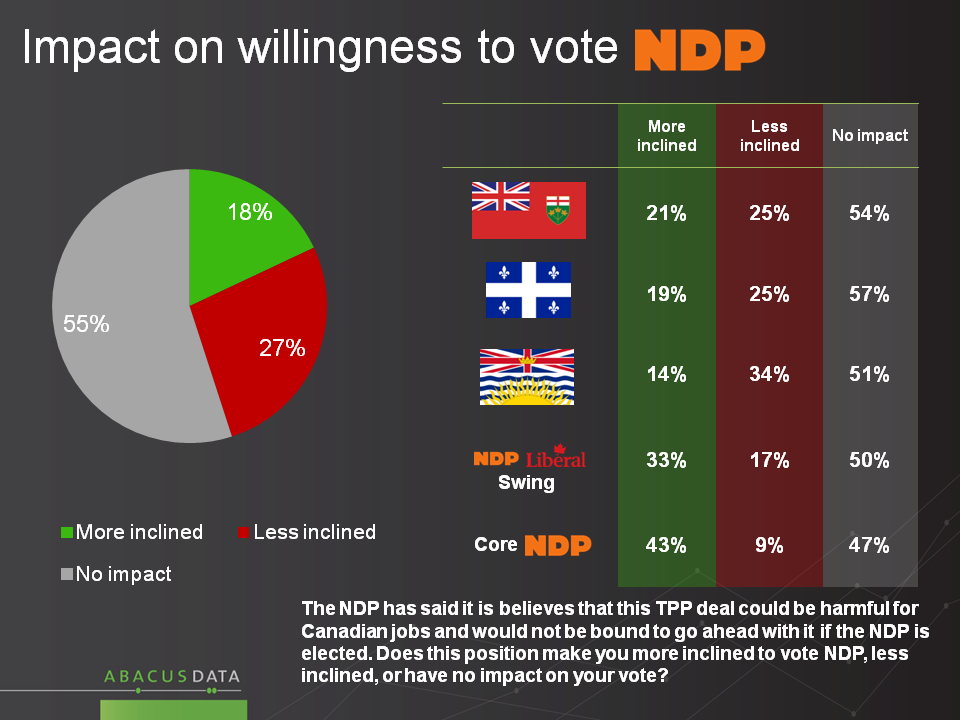
The Upshot
The election remains unpredictable because while most voters want change, not everyone feels strongly about that, and those who want change continue to be split somewhat between voting Liberal and NDP.
Over the course of the campaign so far, the Liberals have been winning the change vote away from the NDP, and Mr. Trudeau’s campaign has impressed voters. Nevertheless, with the regional concentrations of votes, it’s an open question as to whether Conservatives win because of a split change vote or whether the drift/coalescence from the NDP to the Liberals continues and causes a change on October 19.
Will TPP be a vote mover? Based on these results, it’s hard to imagine the deal or the reaction to it having a large impact. Many voters feel it’s hard to have an opinion about the deal. Between the NDP and the Liberals, the NDP position is not as productive as the Liberal position when it comes to the battle for support among swing voters. The NDP posture will help somewhat among the NDP base, but not hugely.
Methodology
Our survey was conducted online with 2,000 Canadians aged 18 and over from 2:00pm ET October 5, 2015 to 4:00pm ET on October 6, 2015. A random sample of panelists was invited to complete the survey from a large representative panel of over 500,000 Canadians, recruited and managed by Research Now, one of the world’s leading provider of online research samples.
The Marketing Research and Intelligence Association policy limits statements about margins of sampling error for most online surveys. The margin of error for a comparable probability-based random sample of the same size is +/- 2.2%, 19 times out of 20. The data were weighted according to census data to ensure that the sample matched Canada’s population according to age, gender, educational attainment, and region. Totals may not add up to 100 due to rounding.
Abacus Data Inc.
We offer global research capacity with a strong focus on customer service, attention to detail and value added insight. Our team combines the experience of our Chairman Bruce Anderson, one of Canada’s leading research executives for two decades, with the energy, creativity and research expertise of CEO David Coletto, PhD. For more information, visit our website at http://www.abacusdata.ca/

